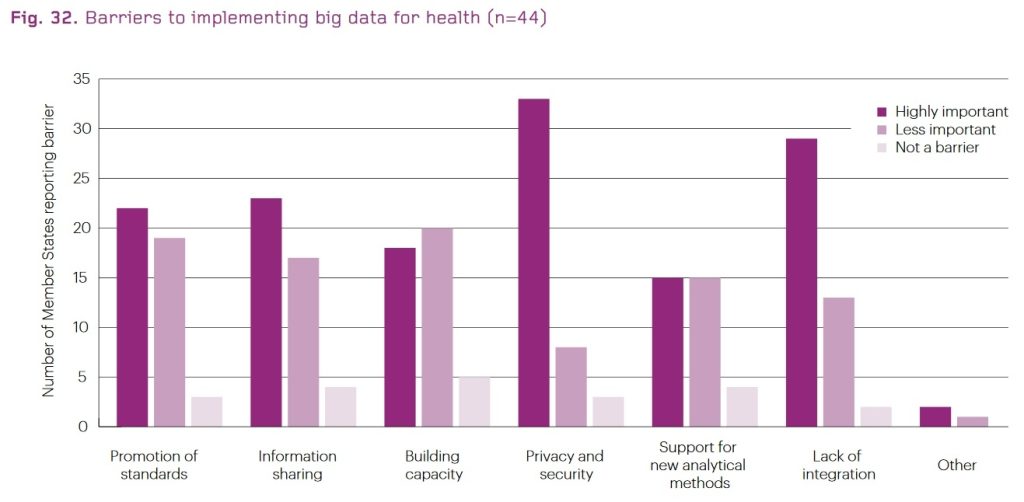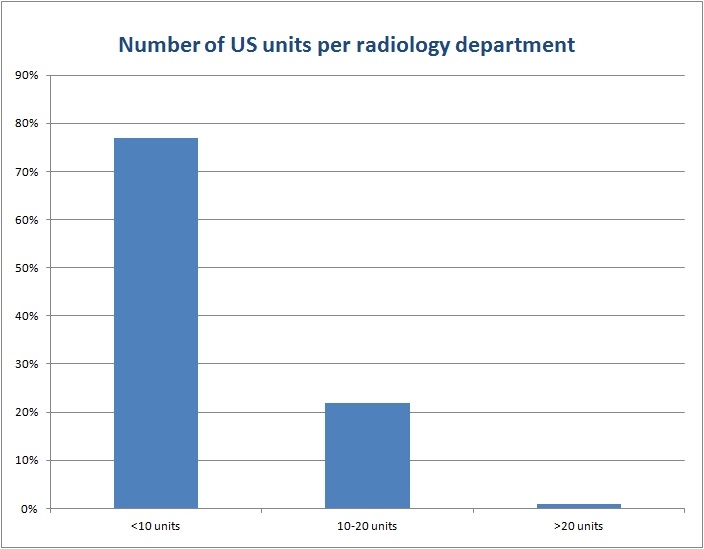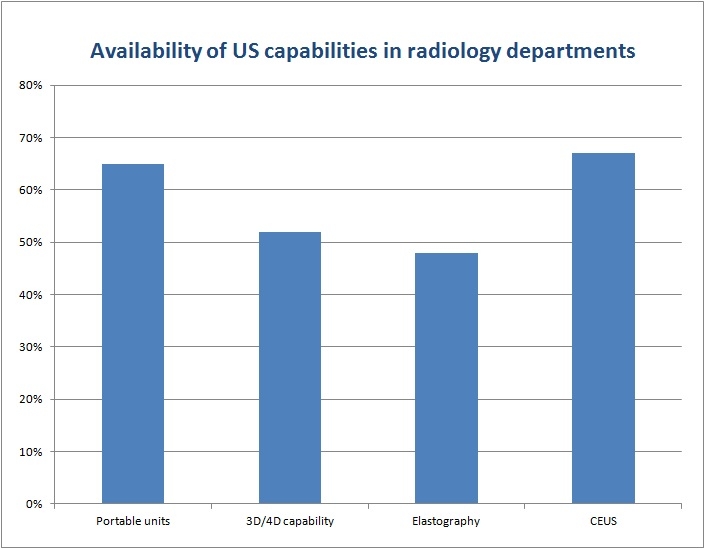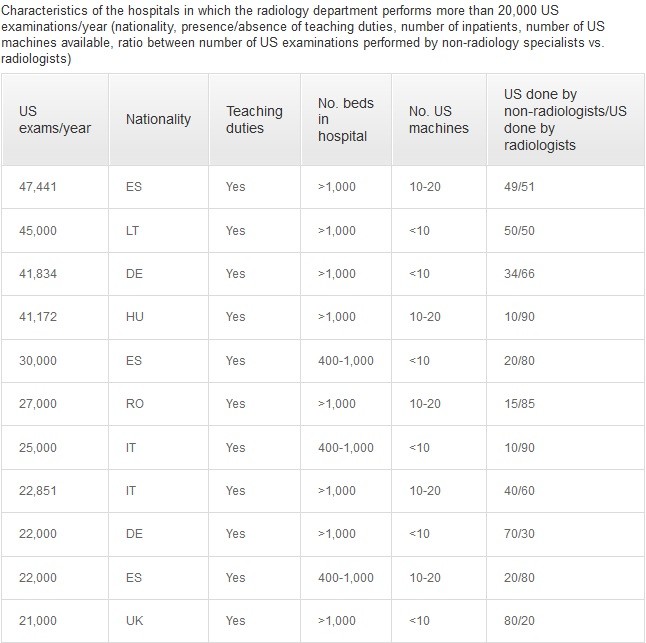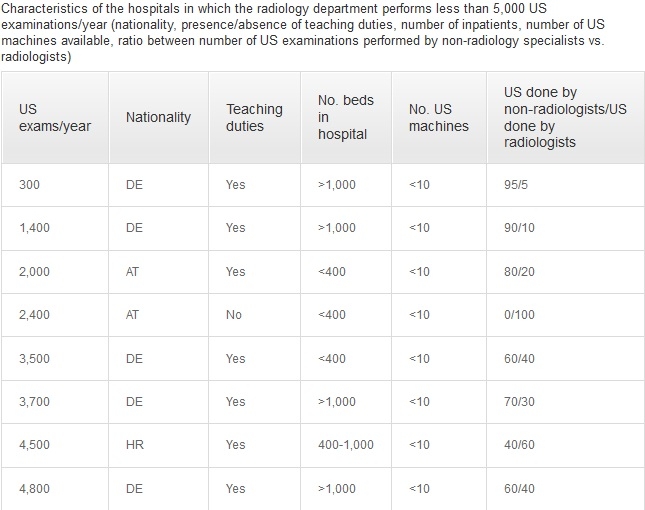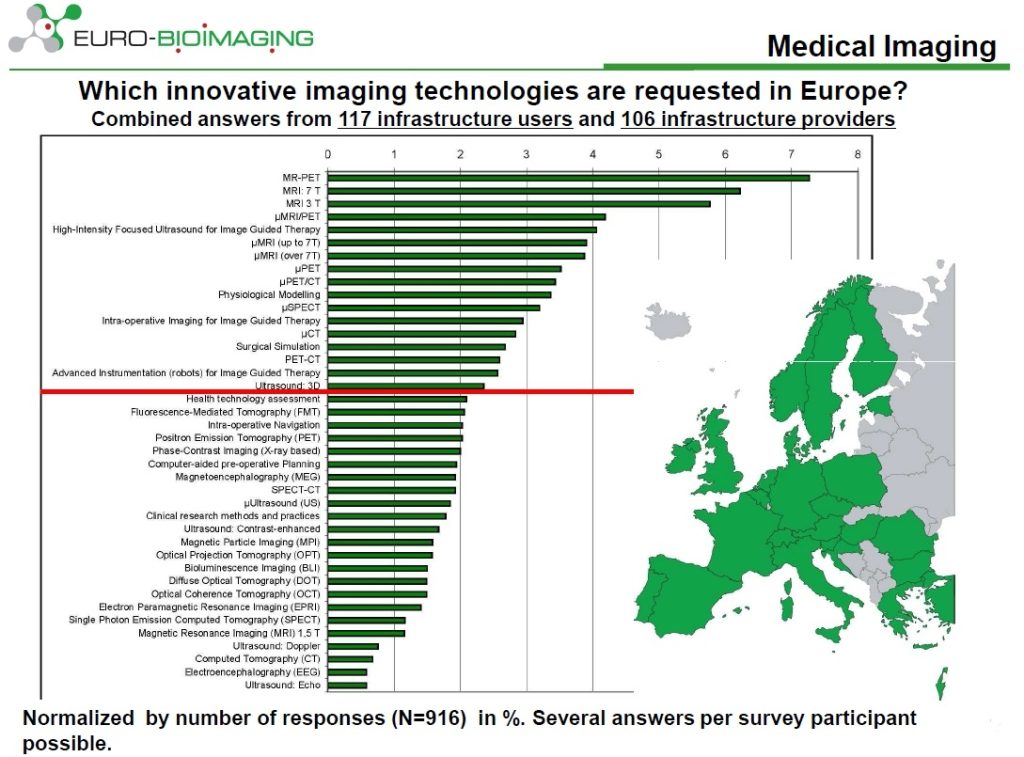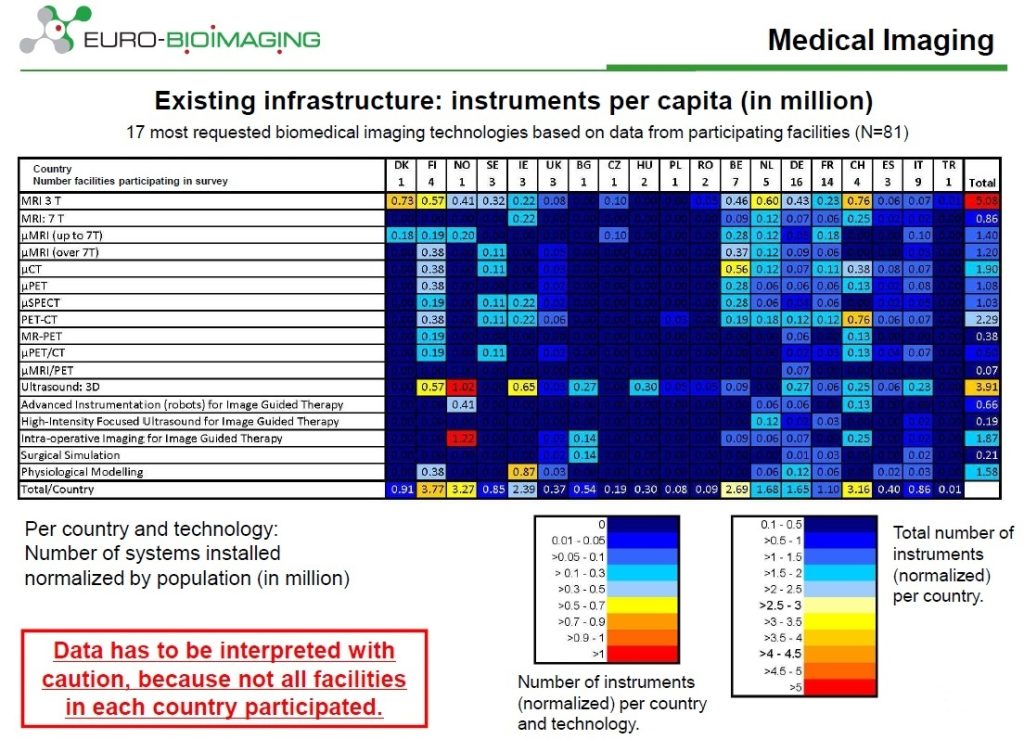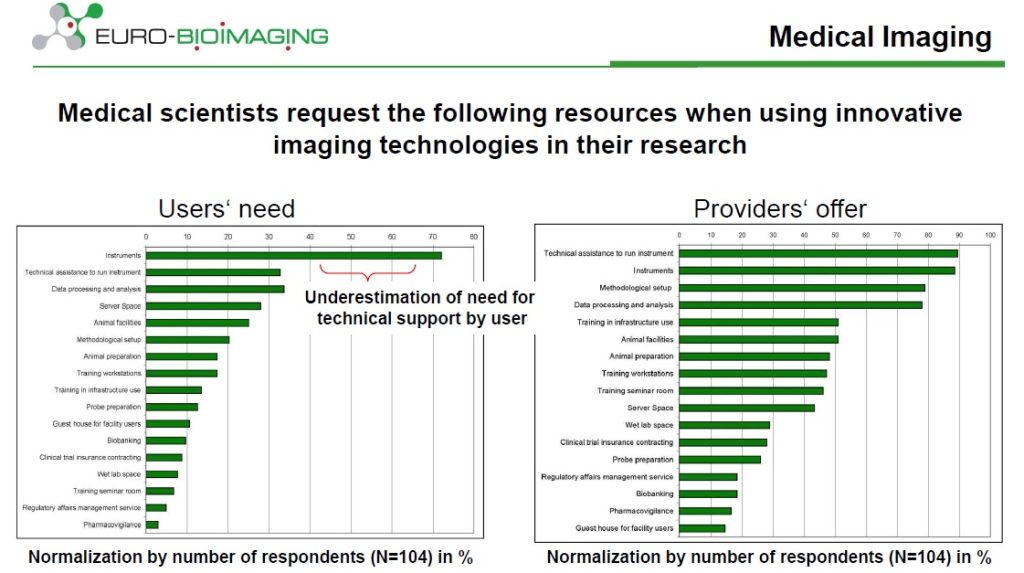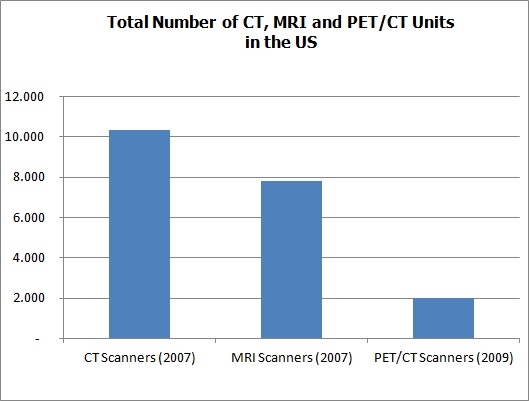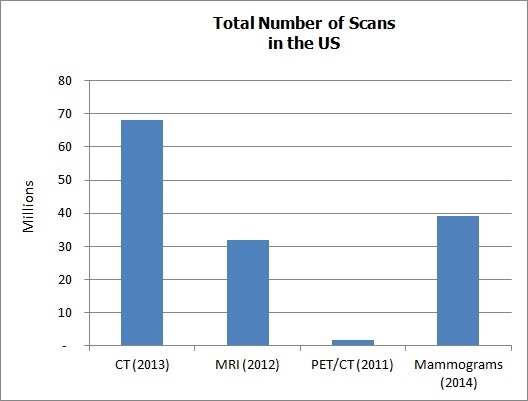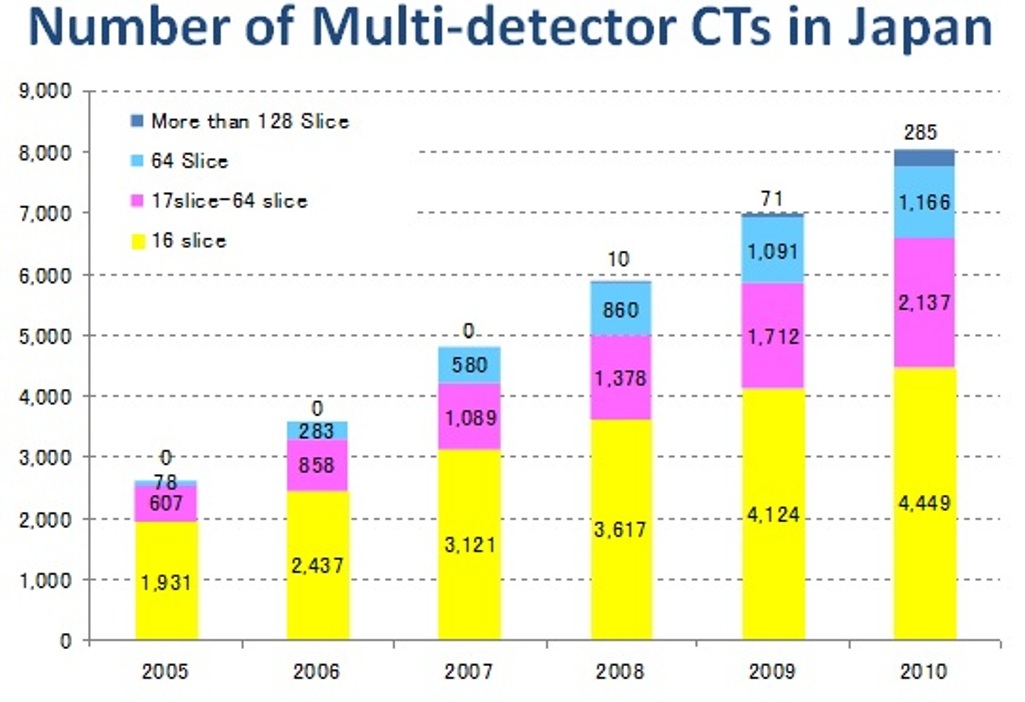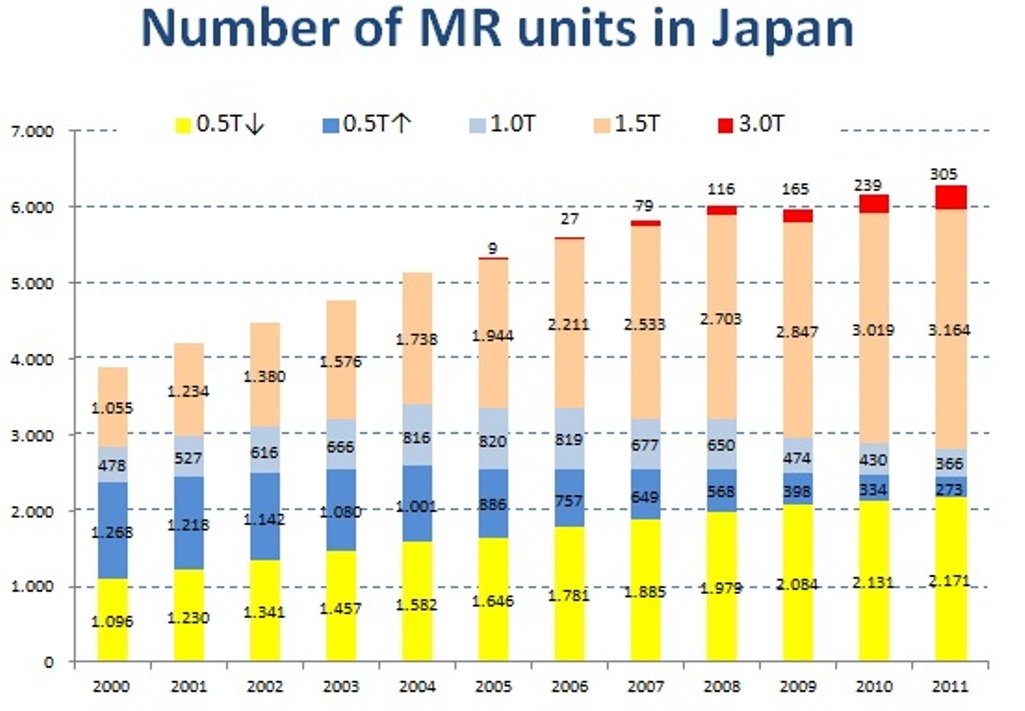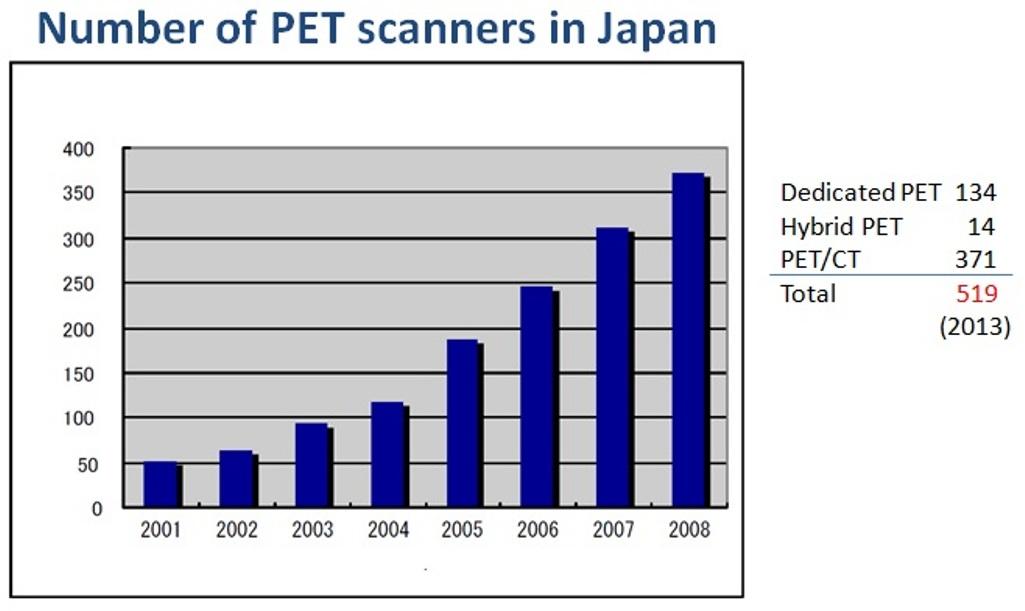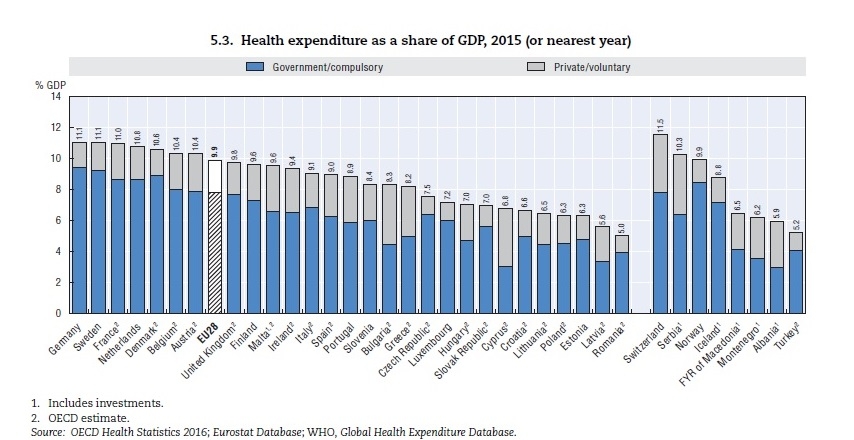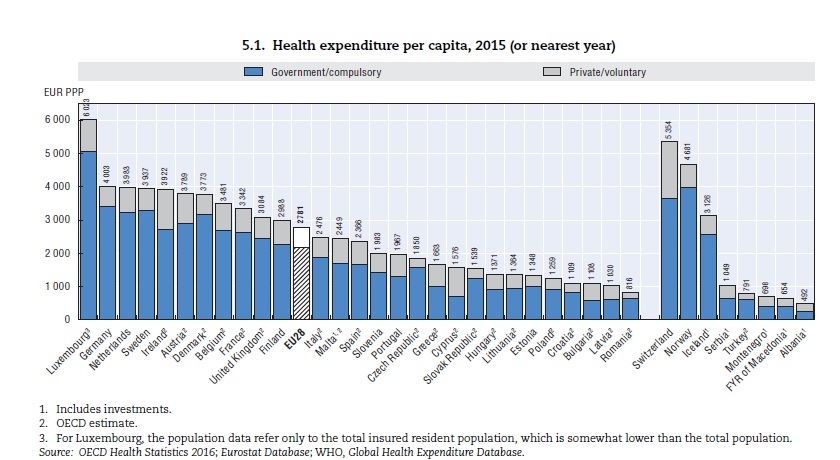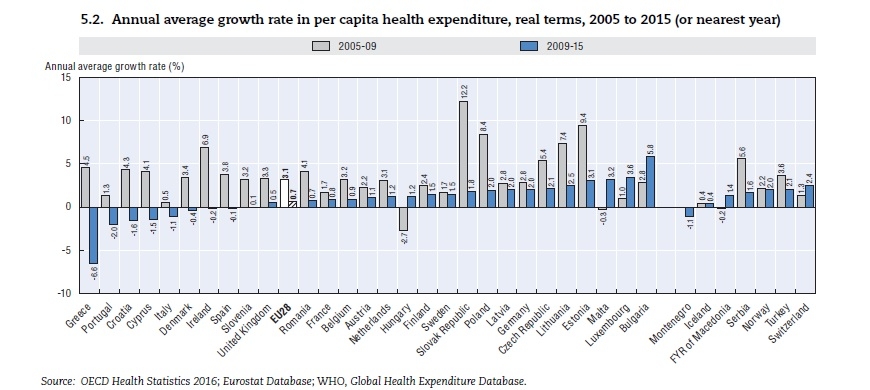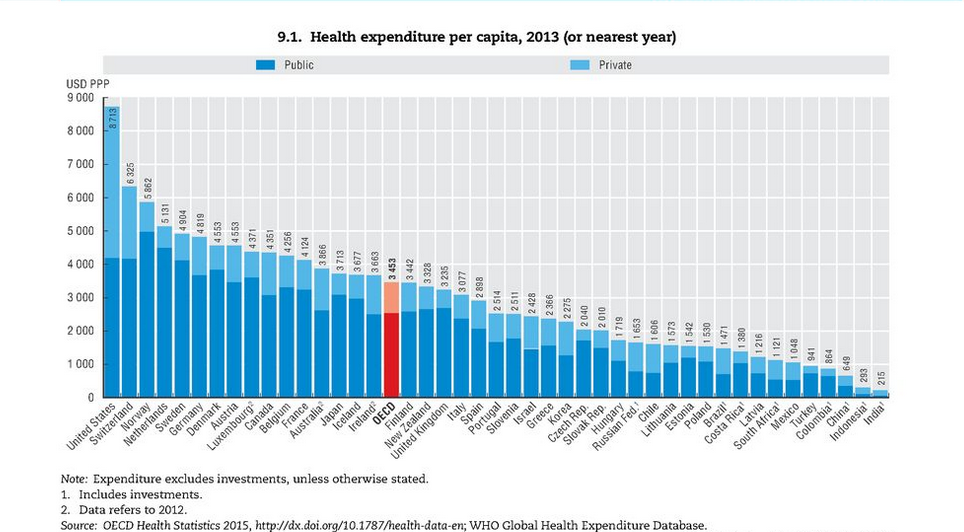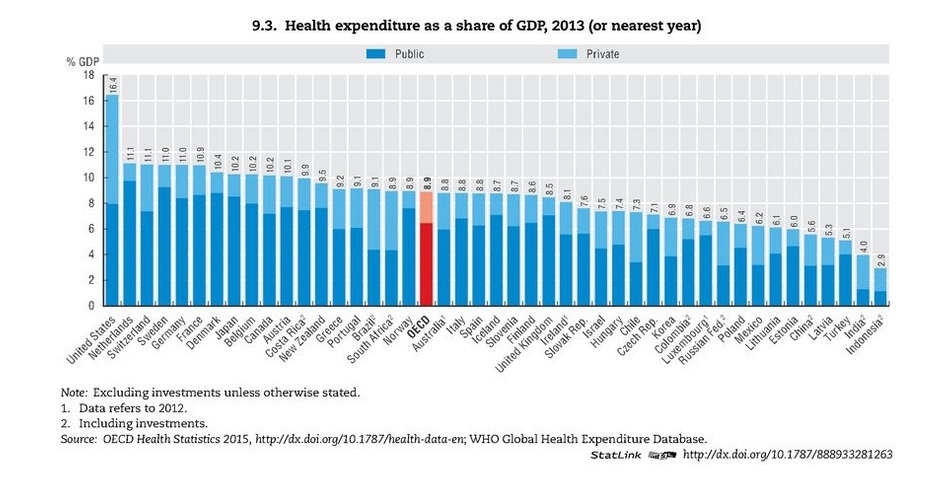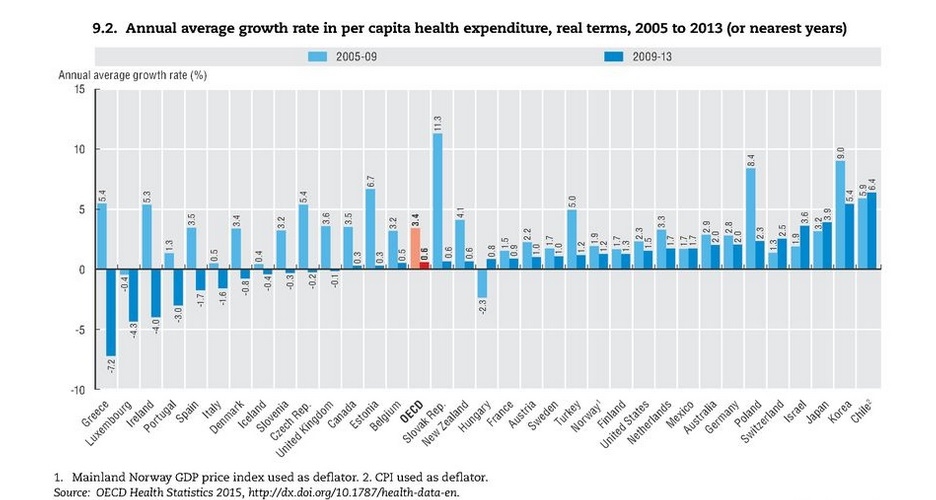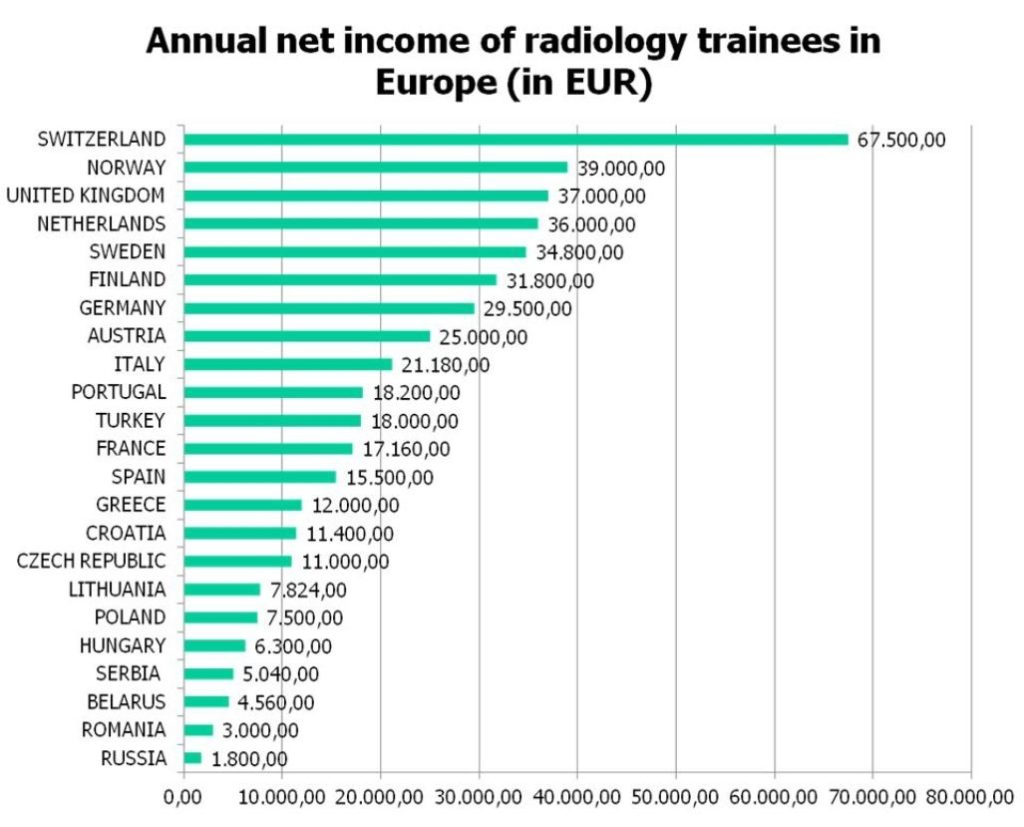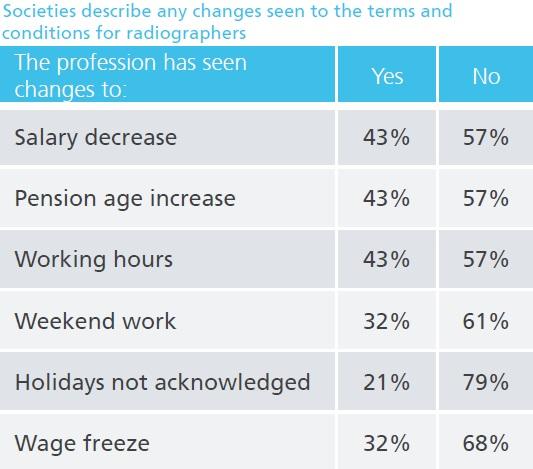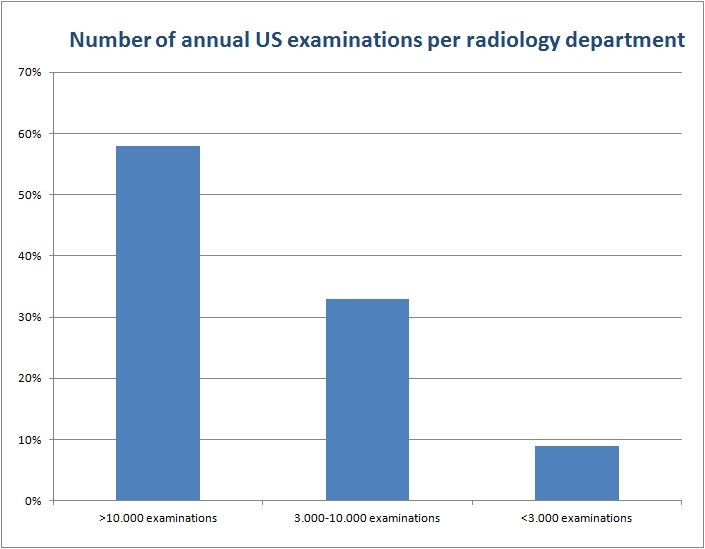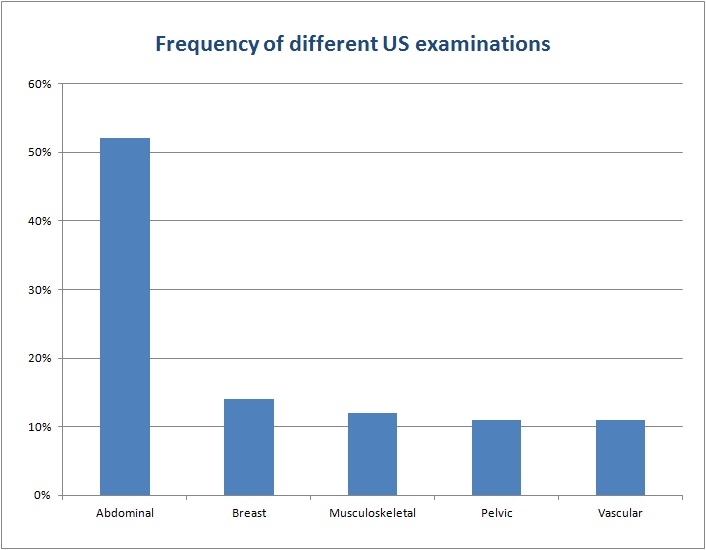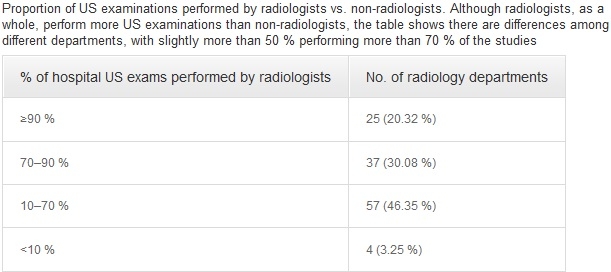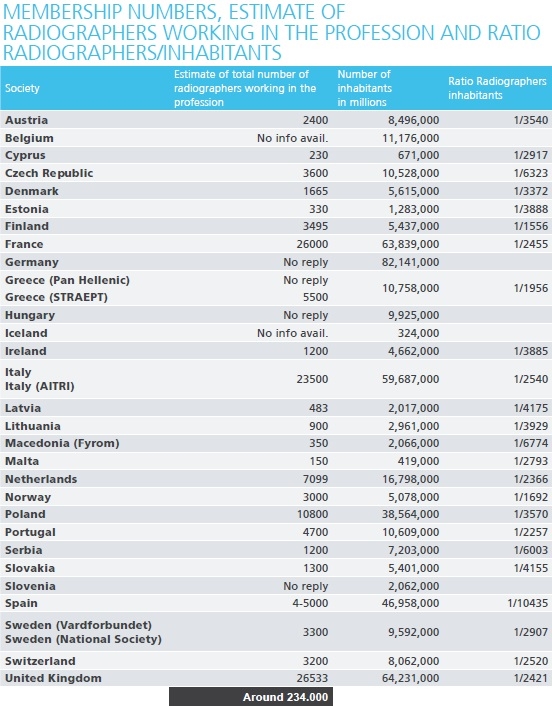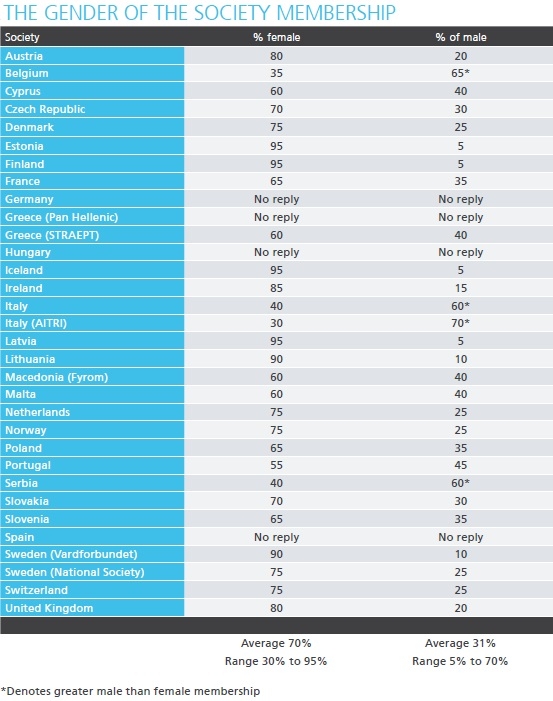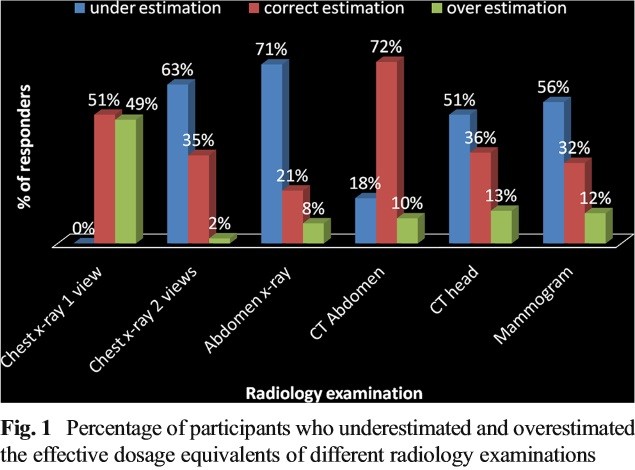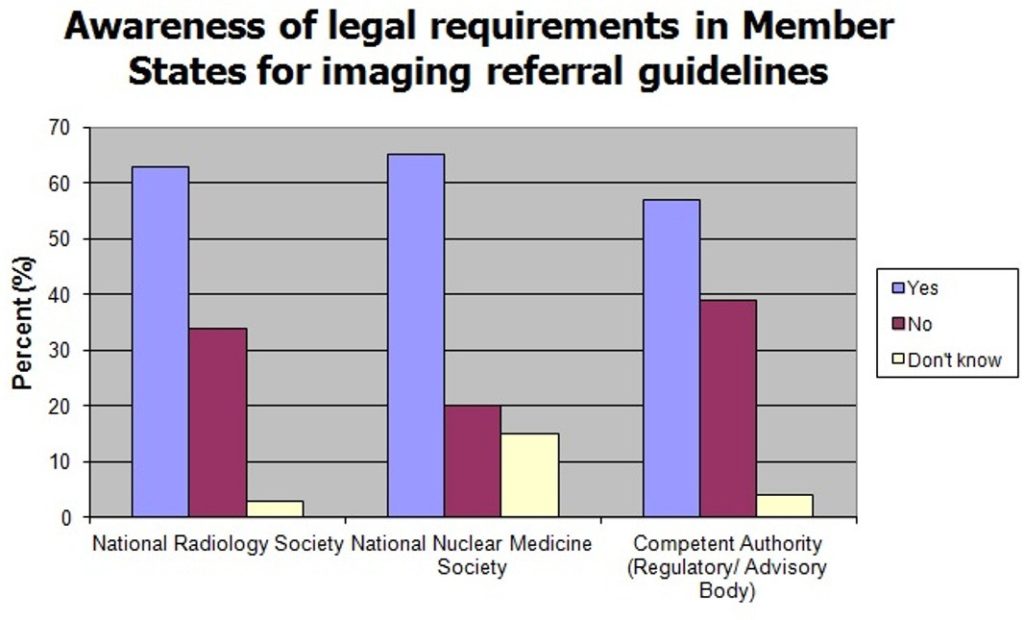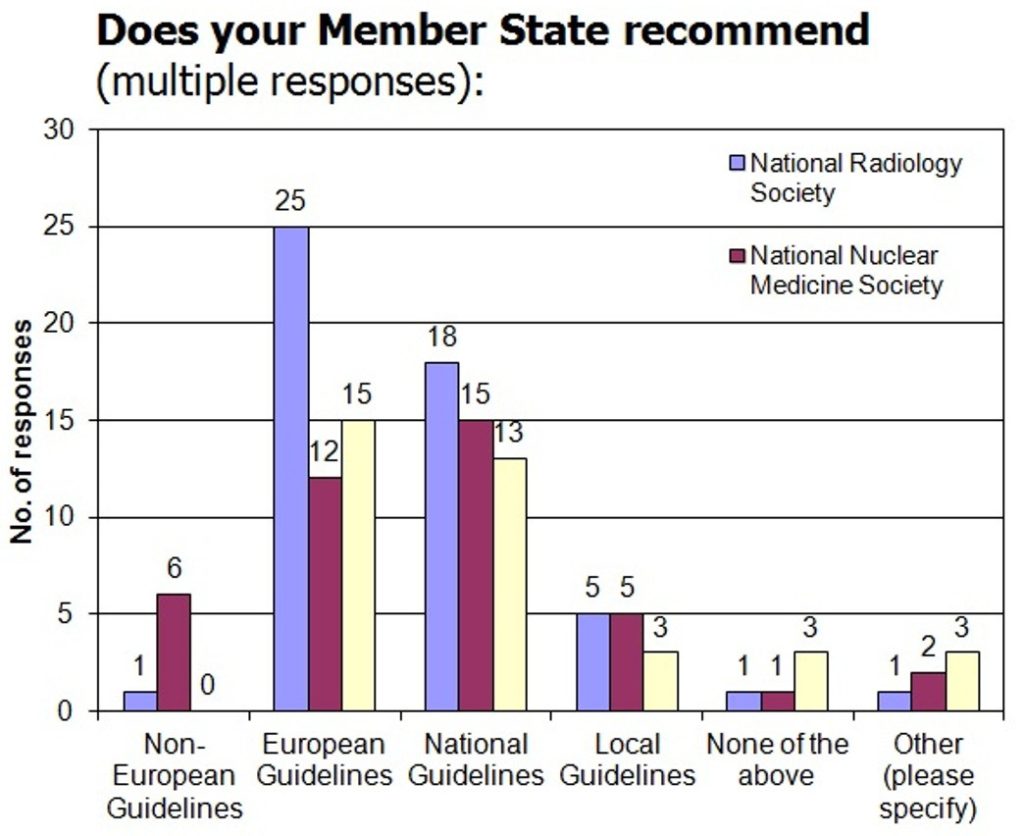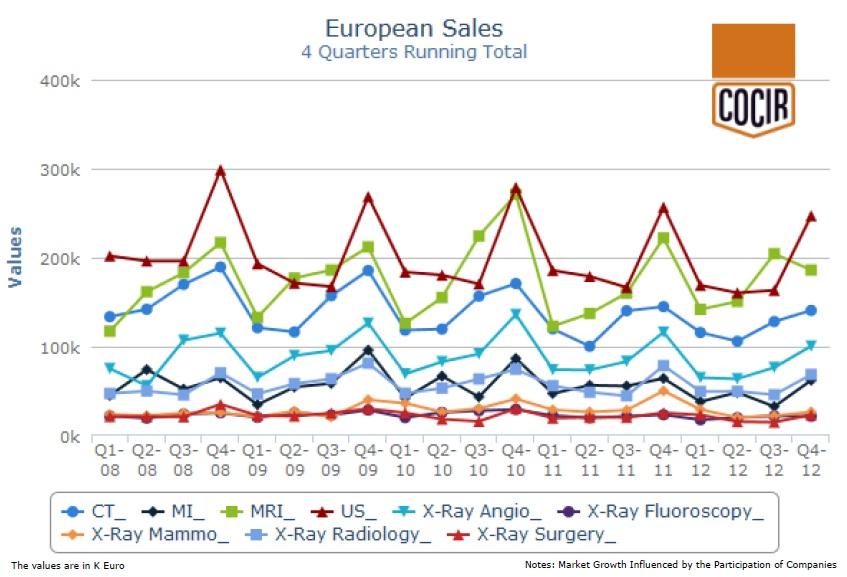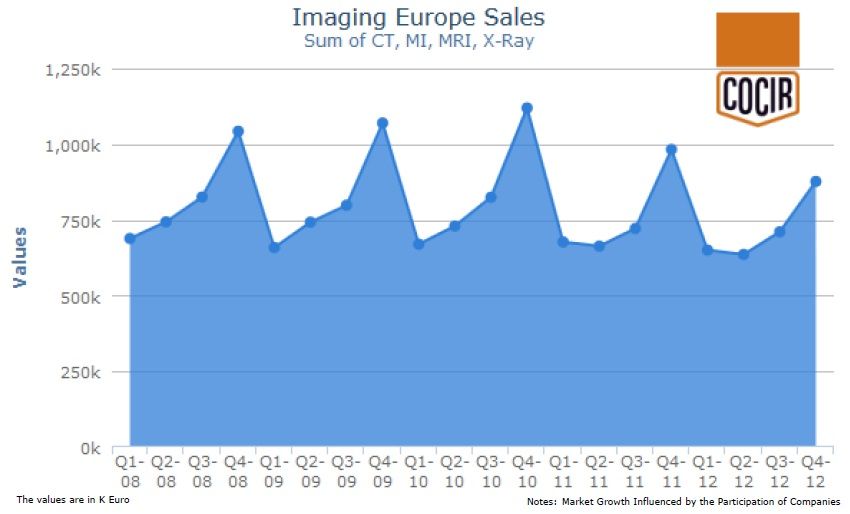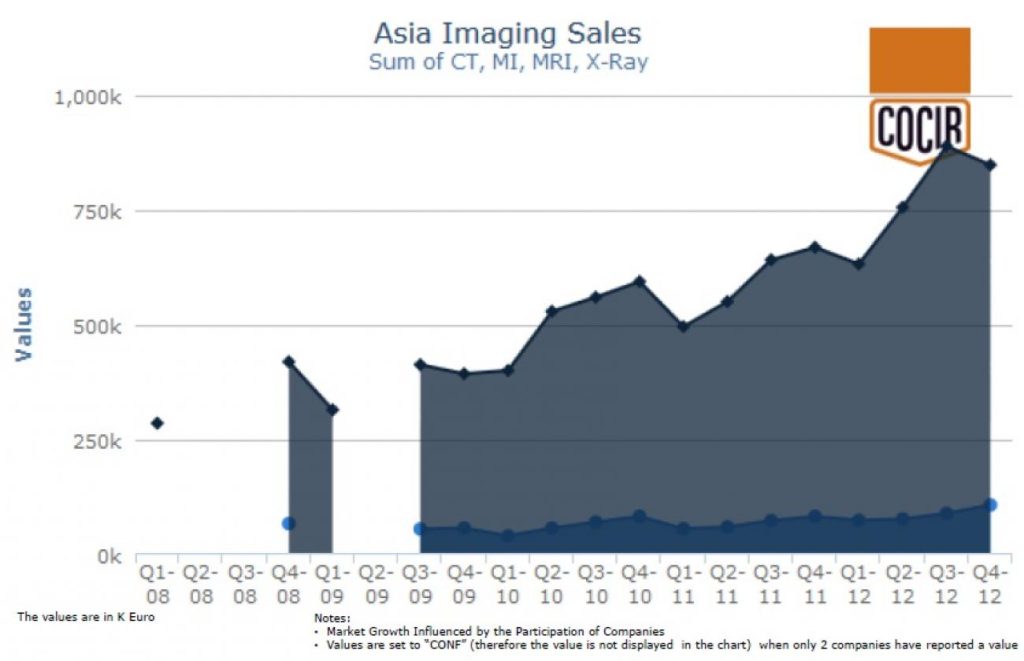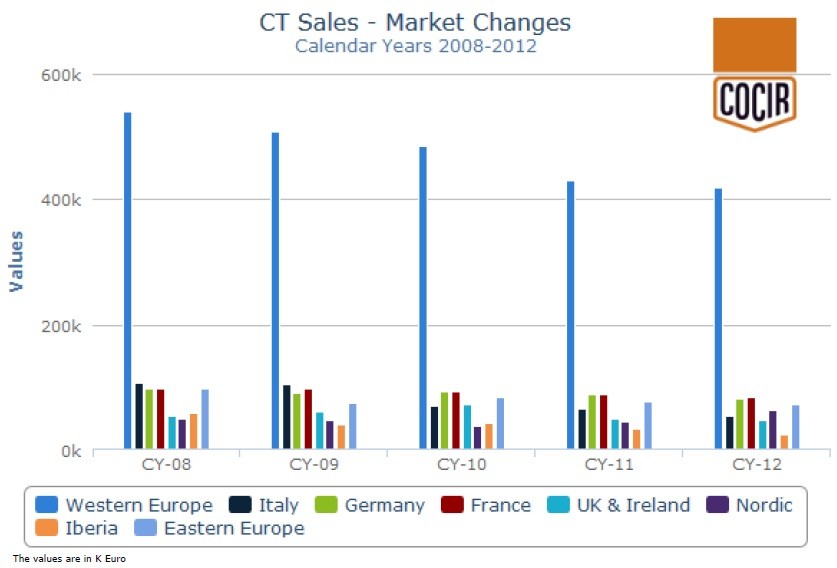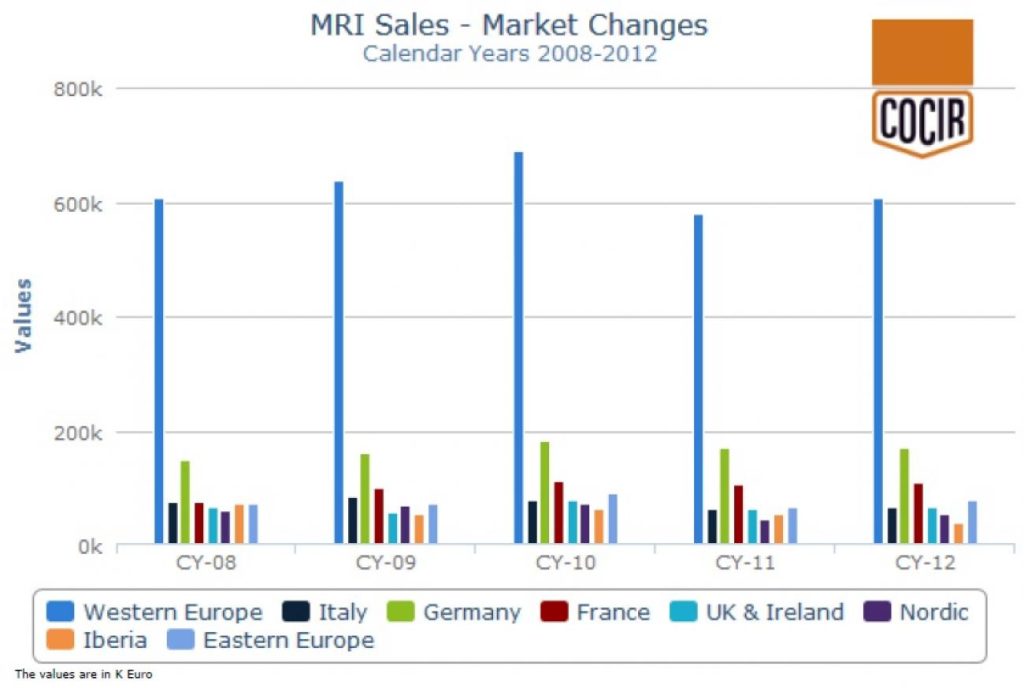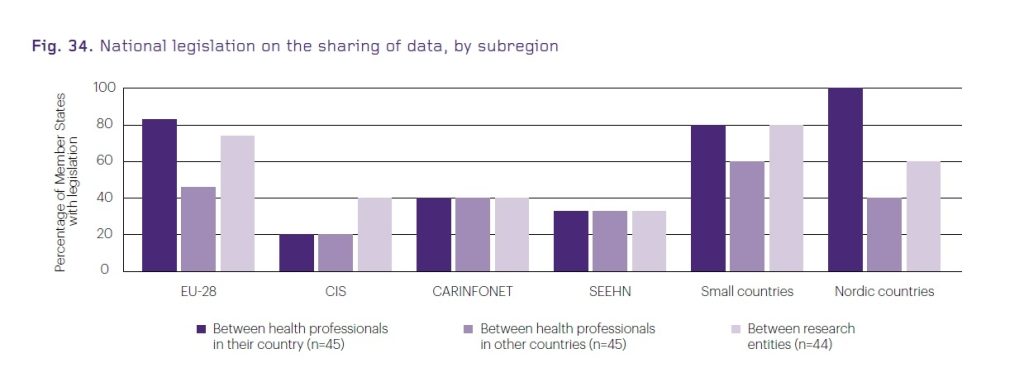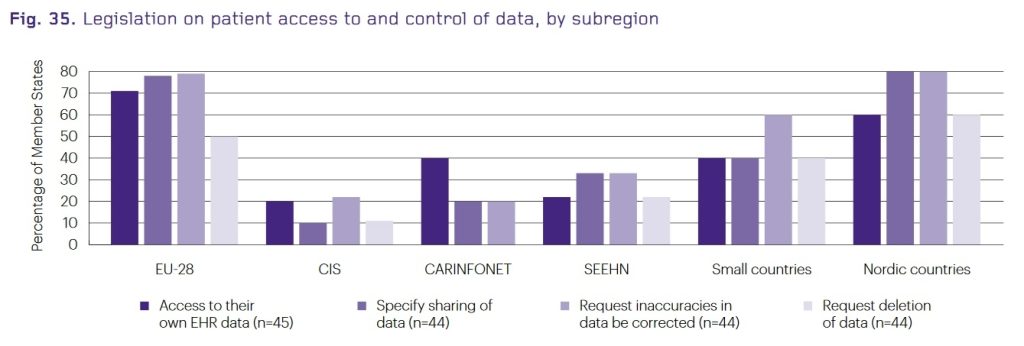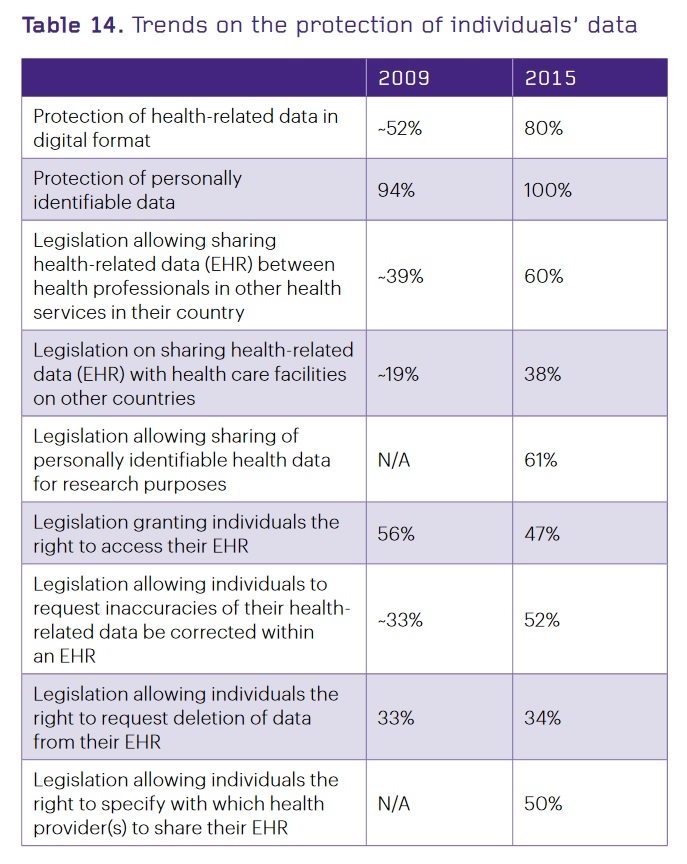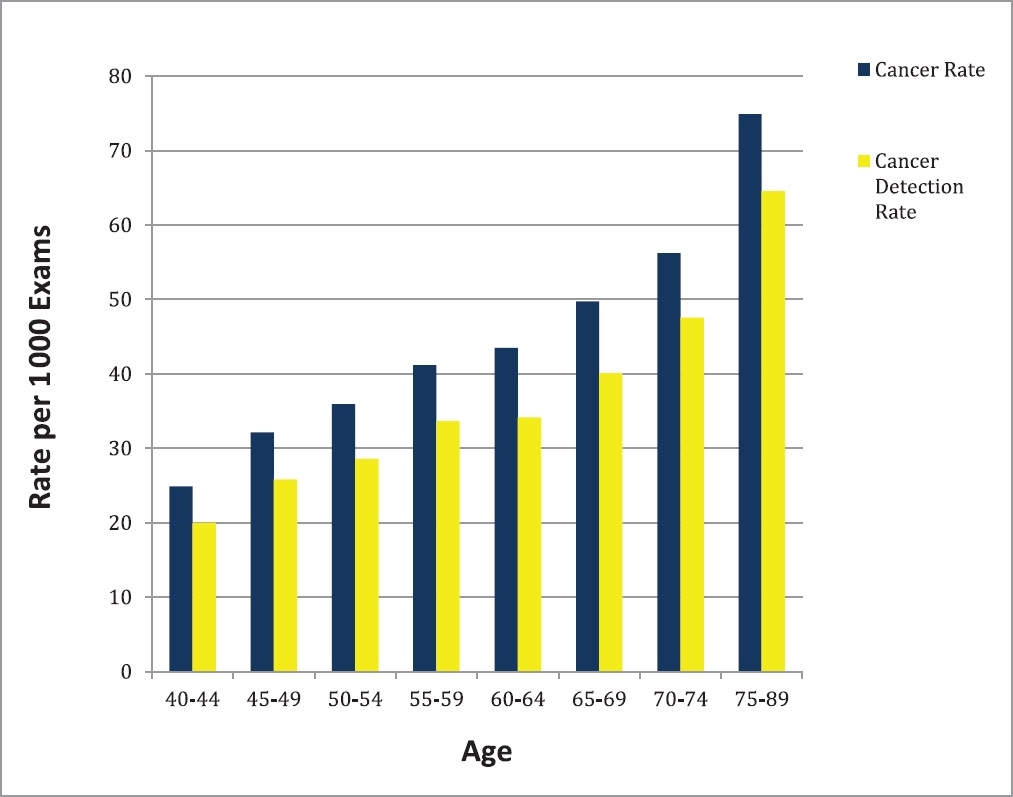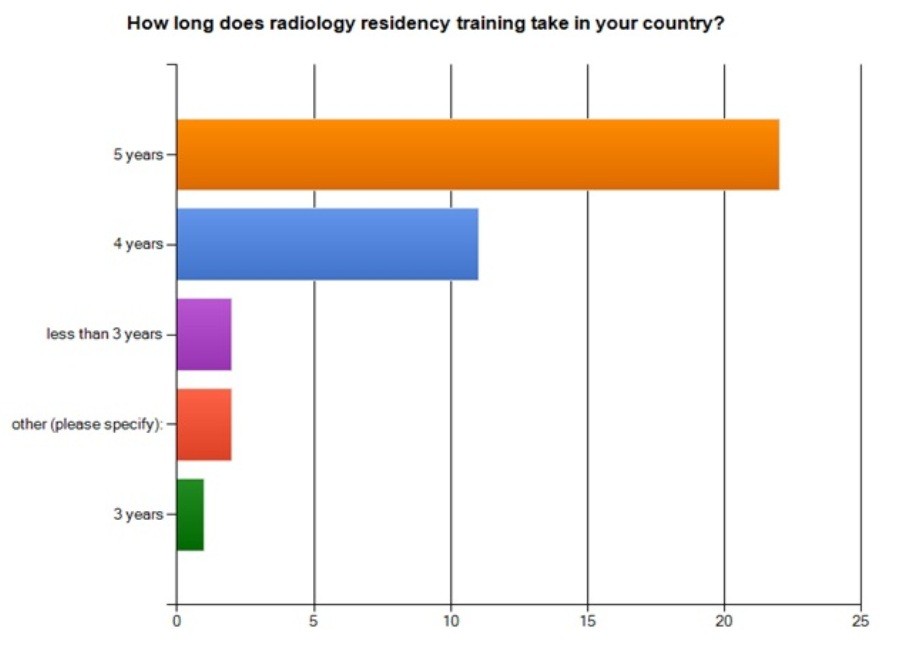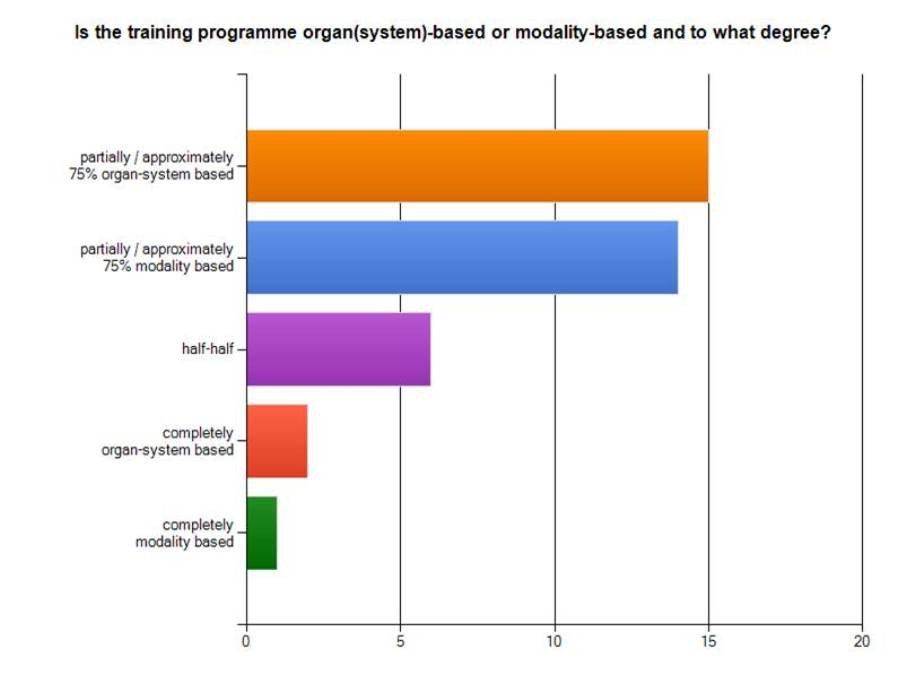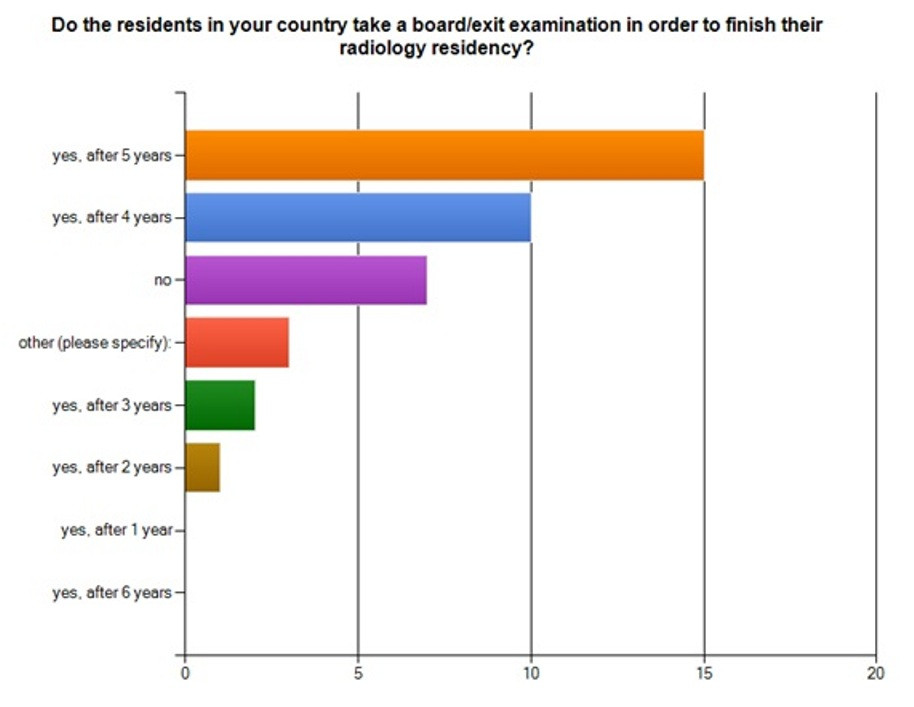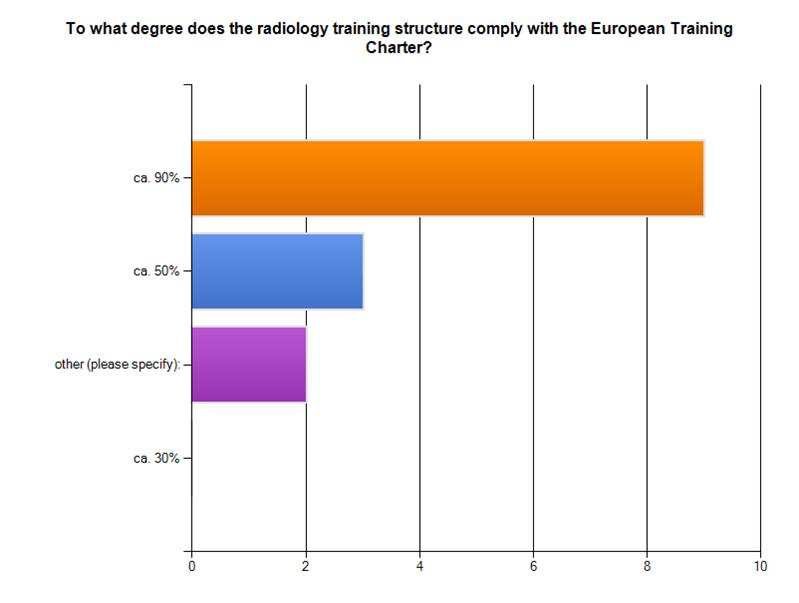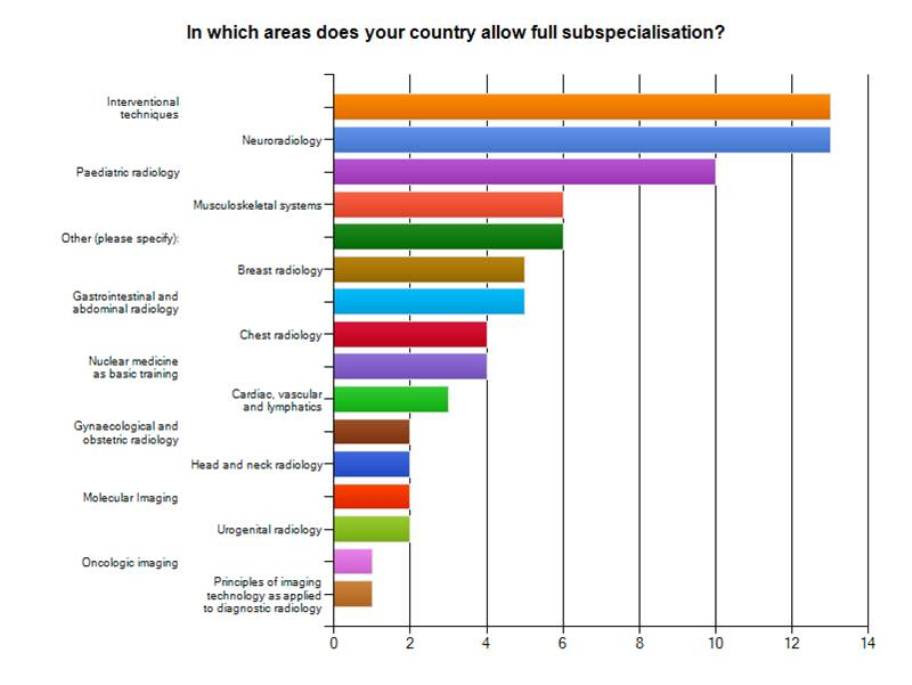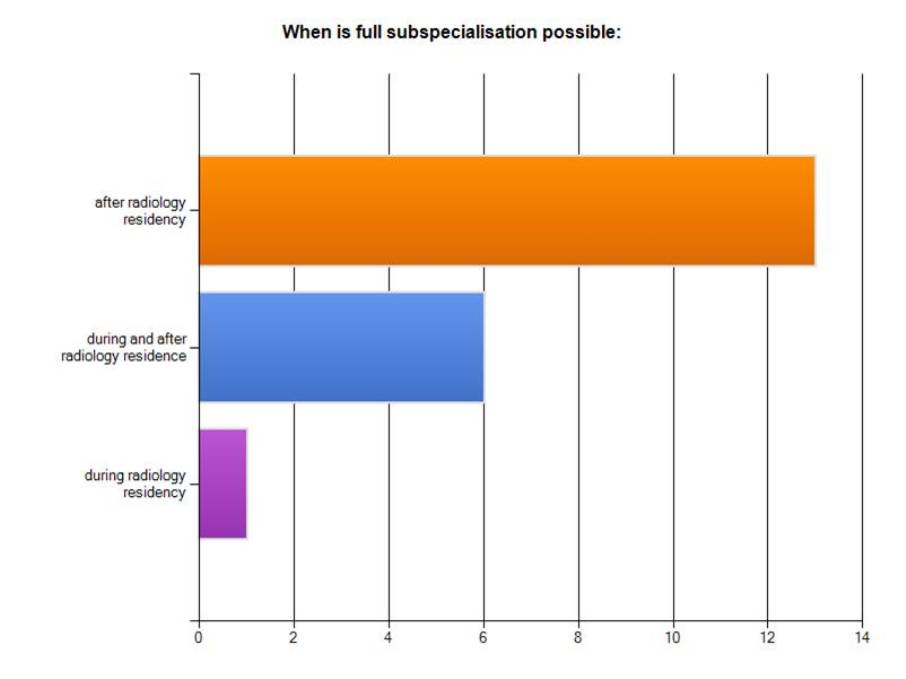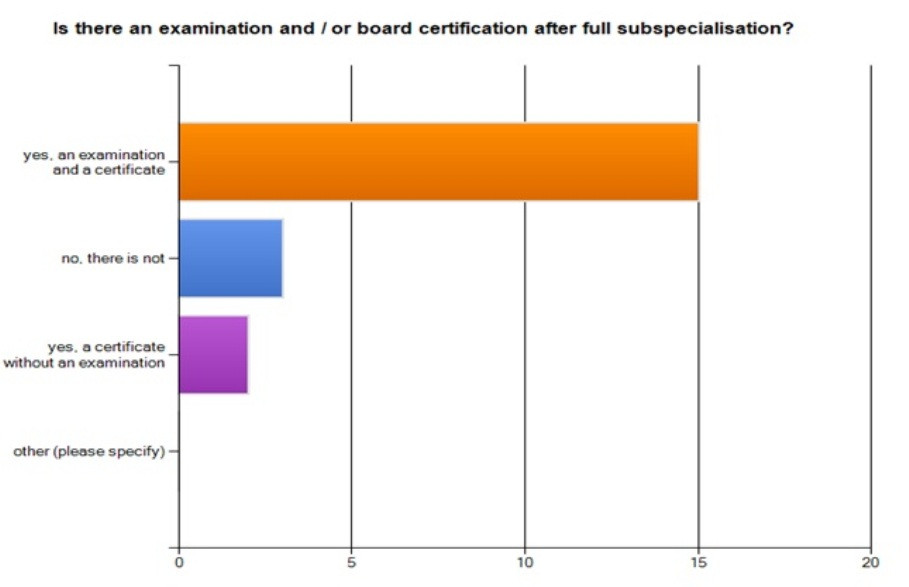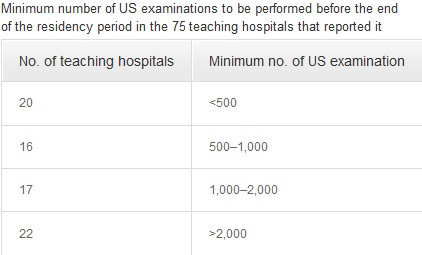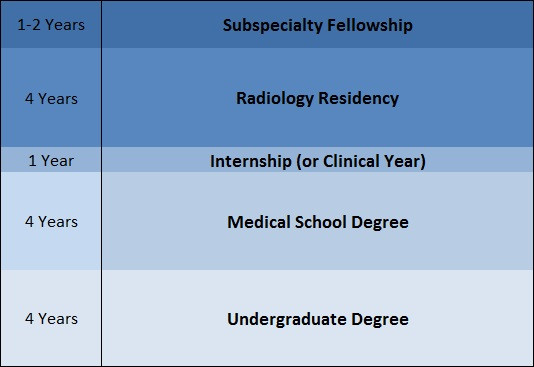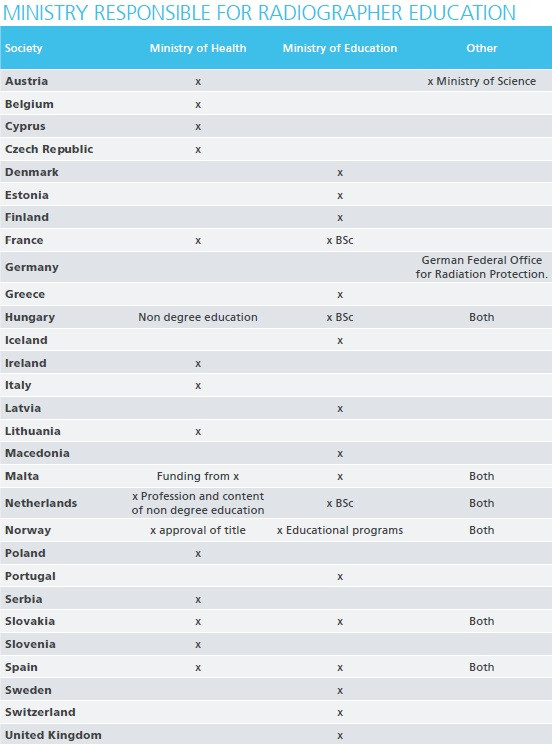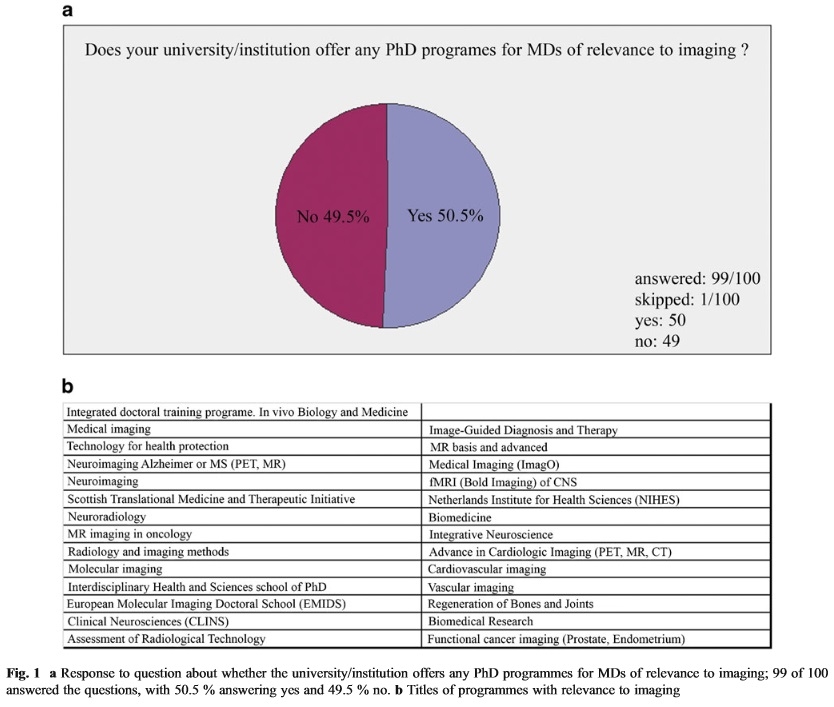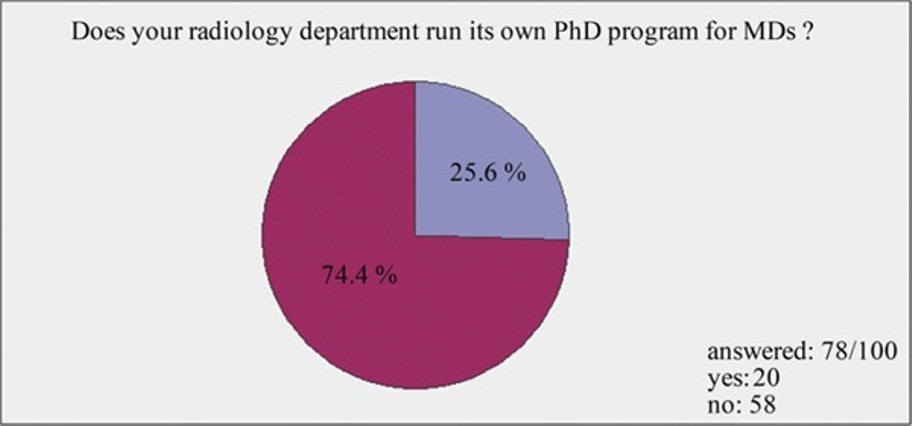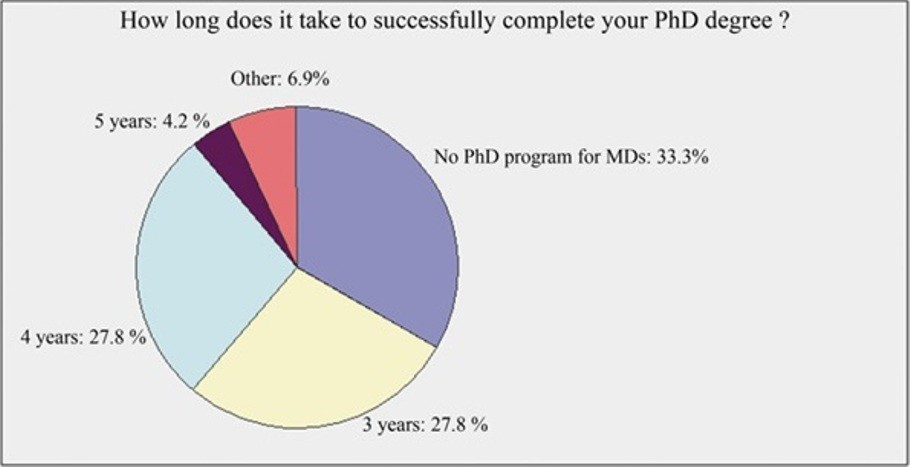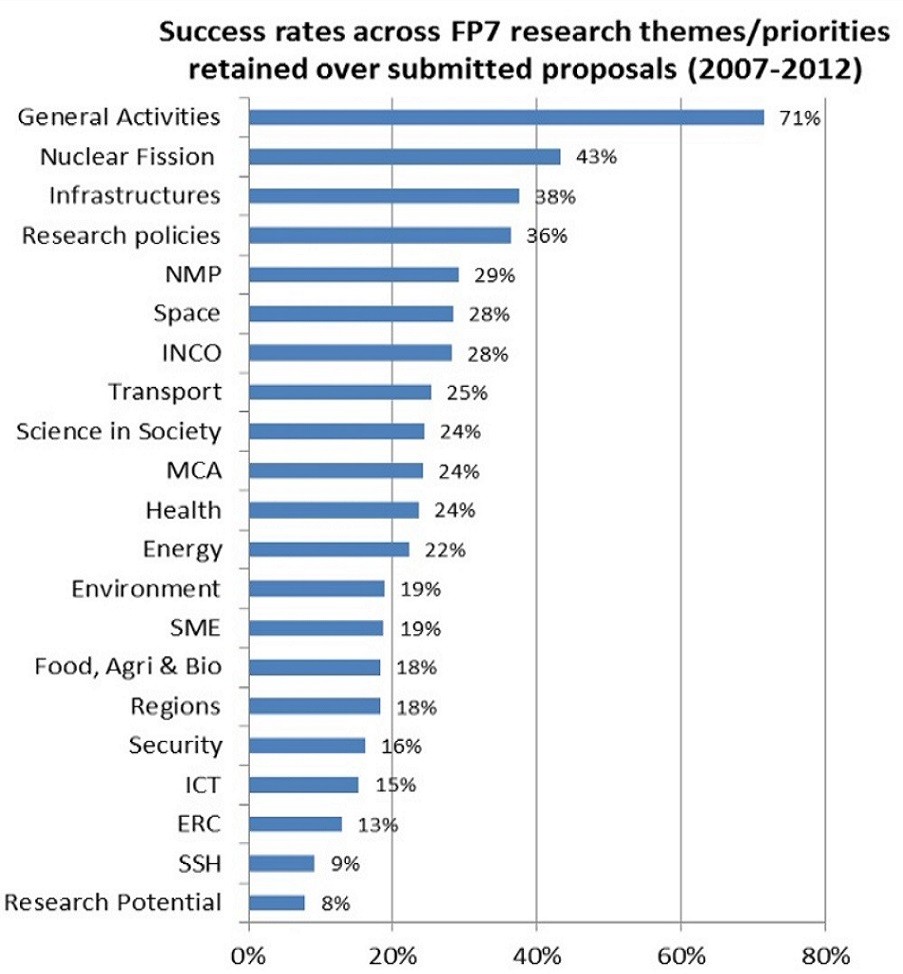Imaging Observatory
ESR’s online library of data on medical imaging.
The Imaging Observatory is an online library of quantitative imaging data. It collects data on imaging from across Europe and beyond and presents it in an easily accessible format, providing links to sources, reports and databases. The Imaging Observatory’s aim is to raise awareness about the status of imaging with a focus on Europe and provide a central access point for imaging data.
We’re always learning.
We are continuously updating and expanding the Imaging Observatory database in order to provide you with a comprehensive and up-to-date statistical overview of medical imaging. If you have relevant data or know of sources that you think we should be aware of, or in case you wish to send us feedback or questions about the Imaging Observatory, please email us here →
Resources
MRI units per million population in Europe, 2014
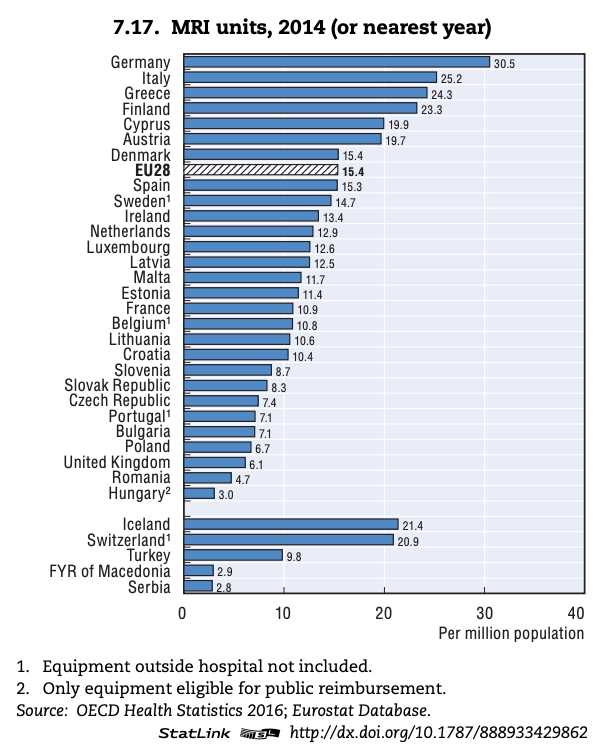
CT scanners per million population in Europe, 2014
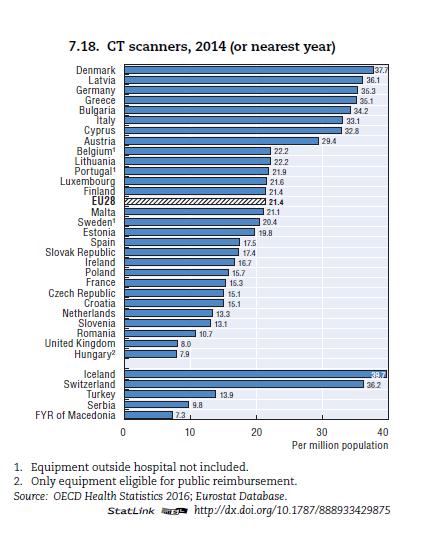
CT scanners per million population in OECD countries, 2013
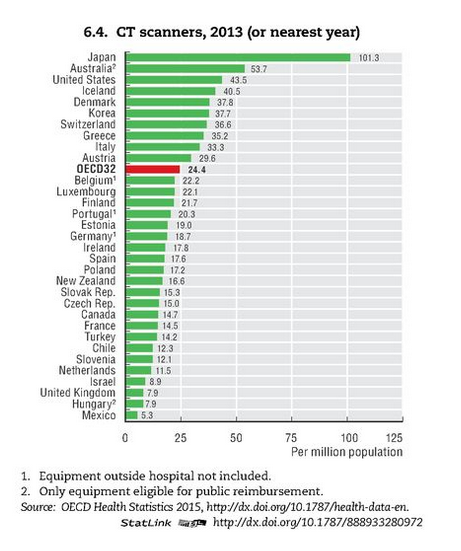
MRI units per million population in OECD countries, 2013
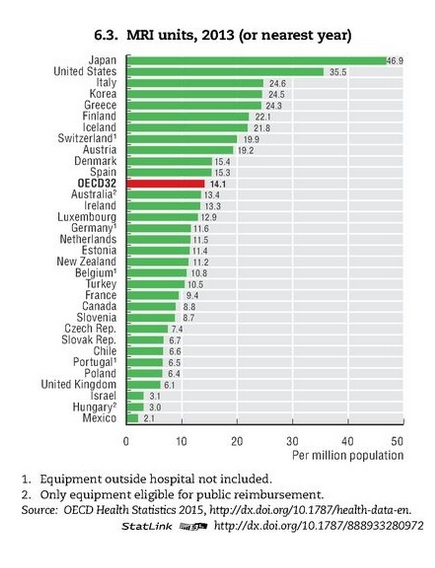
PET scanners per million population, 2010
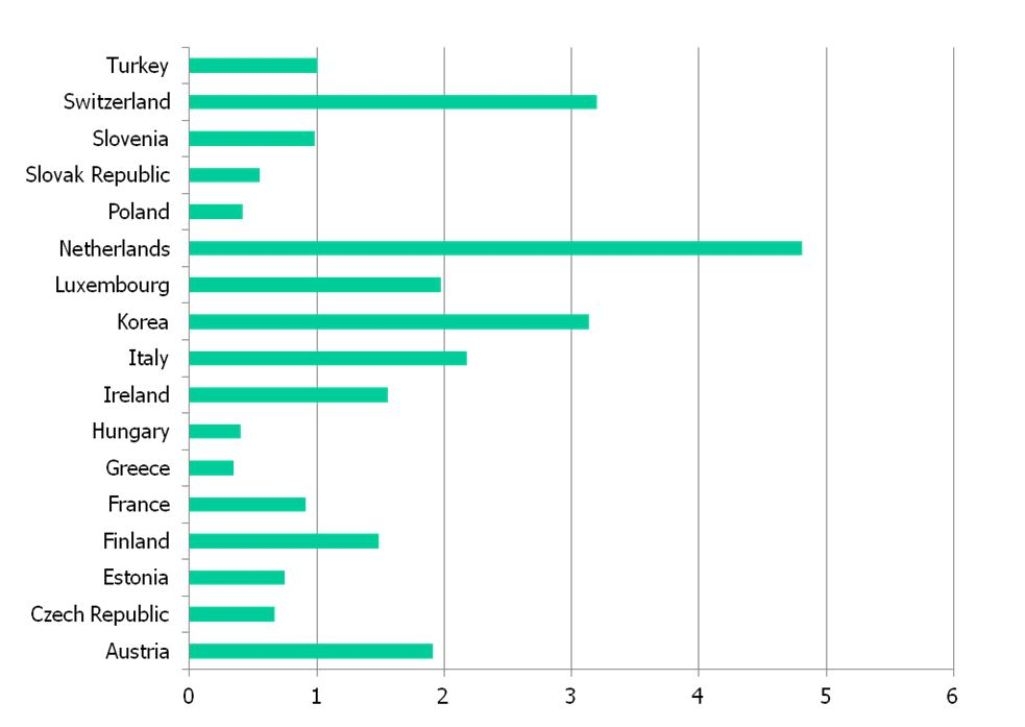
Mammographs per million population, 2010
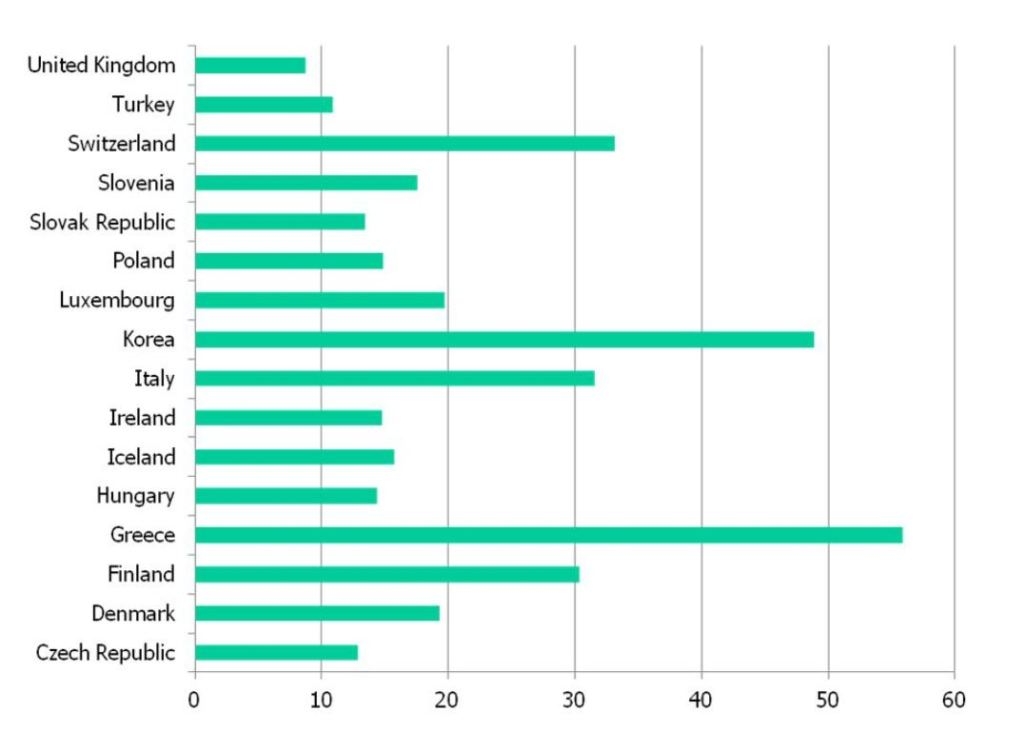
Number of MR and CT units in OECD Countries, 2007
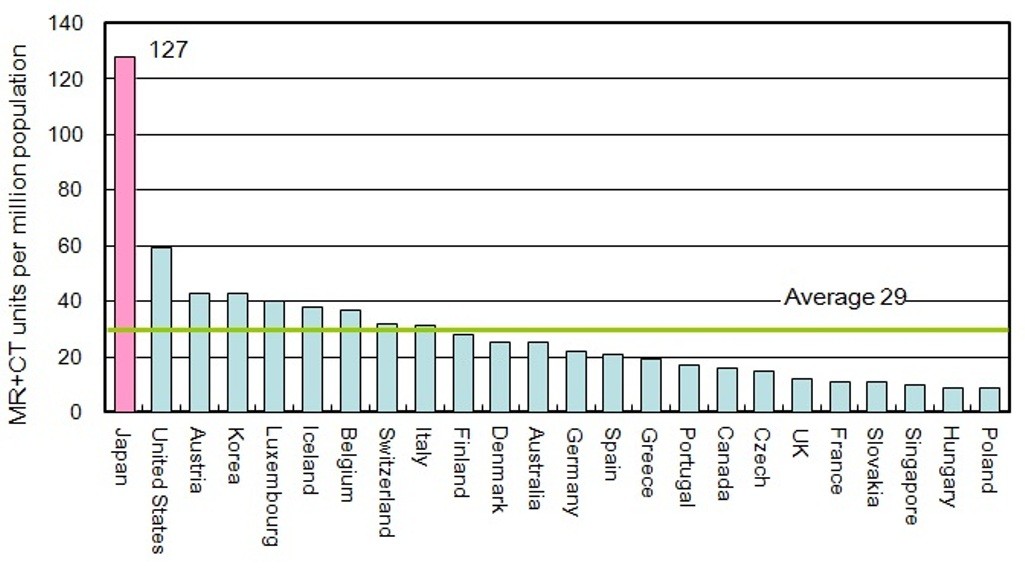
Source: European Society of Radiology (2013). Organisation and practice of radiological ultrasound in Europe: a survey by the ESR Working Group on Ultrasound. In Insights into Imaging, August 2013, Volume 4, Issue 4, pp. 401-407. Available here.
Survey Methodology: A survey containing 38 questions and divided into four groups was developed and made available online. The questionnaire was sent to over 1,000 heads of radiology departments in Europe. Of the 1,038 radiologists asked to participate in this survey, 123 responded. Excluding the 125 invitations to the survey that could not be delivered, the response rate was 13 %.
A list of the nationalities of respondents is available here.
Imaging Equipment in the United States (Data kindly compiled by the American College of Radiology)
Source: Euro-BioImaging, Strategic Inventory Map: Outcome of Survey (2011). Available here.
Survey Methodology: Euro-BioImaging conducted a Europe-wide survey on imaging research infrastructure that ran from June 1 to July 15 2011 with the aim of establishing an inventory of existing imaging infrastructure and assessing the needs of users, providers, industry and funders. Responses were received from 660 participants. However, results are not representative or comprehensive for each technology or country and therefore need to be interpreted with caution.
Imaging Equipment in the United States (Data kindly compiled by the American College of Radiology)
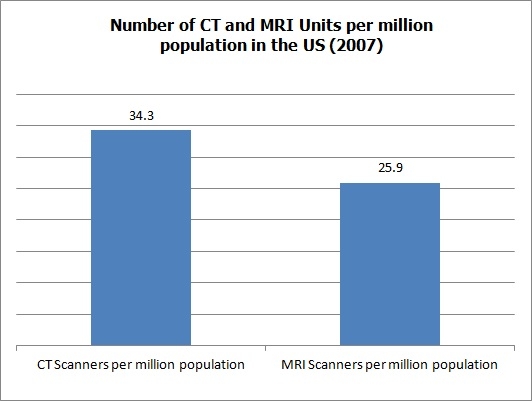
Source: Radiologist supply and workload: international comparison. Working Group of Japanese College of Radiology. Yasuo Nakajima, Kei Yamada, Keiko Imamura, Kazuko Kobayashi. Radiat Med (2008) 26:455–465. Available here (requires ResearchGate Membership Login).
COCIR Medical Imaging Equipment Age Profile & Density
COCIR periodically assesses the Age Profile situation of CT, MRI, PET-Nuclear Medicine and Angiography medical diagnostic imaging equipment in European countries.
The basis for the evaluation of the status of imaging equipment are COCIR’s three ‘Golden Rules’:
- At least 60 percent of the installed equipment base should be younger than 5 years.
- Not more than 30 percent should be between 6-10 years old.
- Not more than 10 percent of the age profile should be older than 10 years.
Health expenditure in Europe, 2015
Source: OECD (2016), Health at a Glance: Europe 2016. State of health in the EU cycle. Available here.
Health expenditure in OECD countries, 2015
Source: OECD (2015), Health at a Glance: OECD Indicators, OECD Publishing. Available here.
Growth of health expenditures in OECD countries, 2001-2013
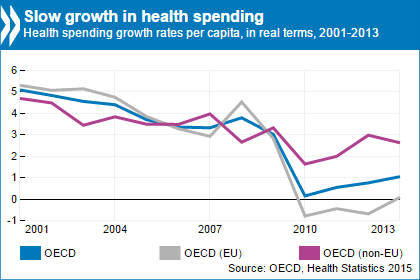
Source: OECD (2015), Slow growth in health spending but Europe lags behind. Available here.
National Health Expenditures in the United States
(Data kindly compiled by the American College of Radiology)
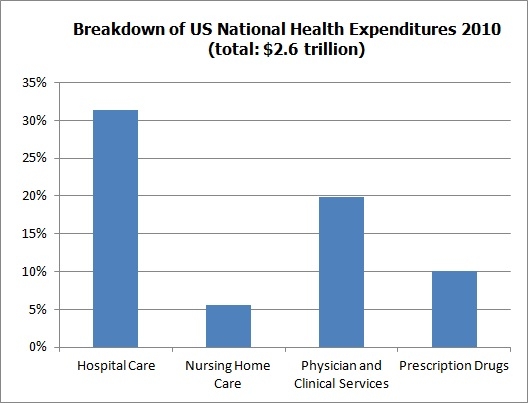
Medical imaging cost models
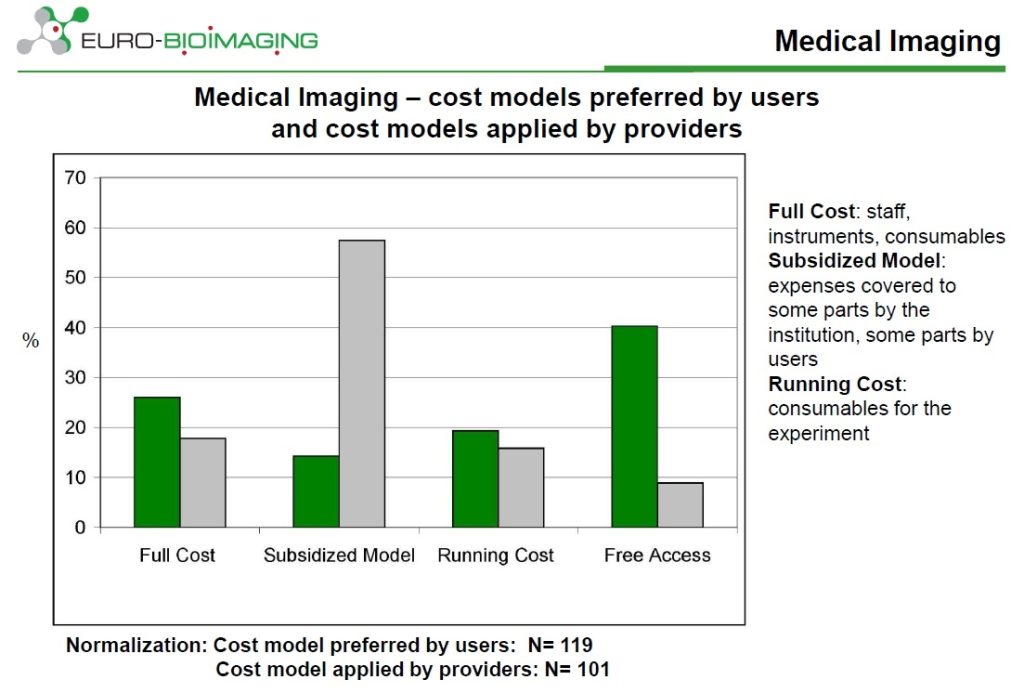
Survey Methodology: Euro-BioImaging conducted a Europe-wide survey on imaging research infrastructure that ran from June 1 to July 15 2011 with the aim of establishing an inventory of existing imaging infrastructure and assessing the needs of users, providers, industry and funders. Responses were received from 660 participants. However, results are not representative or comprehensive for each technology or country and therefore need to be interpreted with caution.
Economic situation of radiographers in Europe, 2012
Survey Methodology: the second EFRS member survey (first survey: 2010) was carried out by the EFRS among national radiographer societies in 29 European countries using both closed and open questions. Out of the EFRS’s 35 member societies, 32 completed the questionnaire. Please note that not every question was completed by all of the 32 respondents.
A list of participating countries and national societies is available here. More information on the EFRS can be found here.
National Labour Market. Availability of radiography jobs for new graduates in 2014.
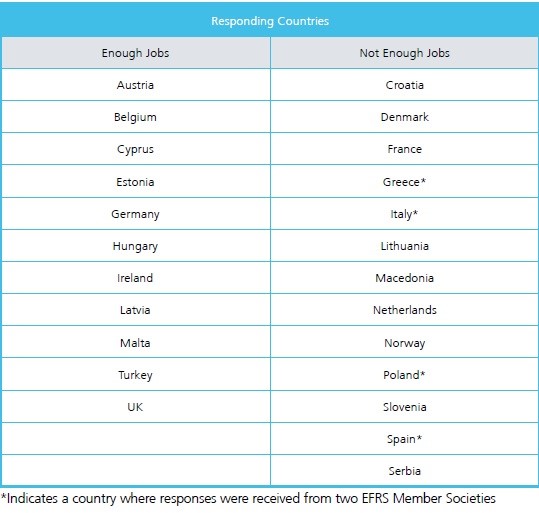
The reimbursement system for the radiological services in the European countries.
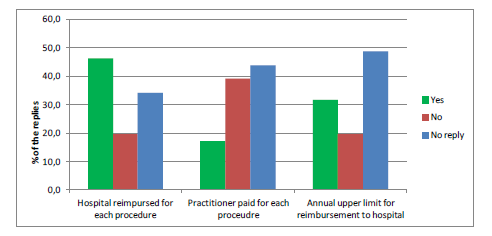
ESR Insurance Survey
ESR Working Group on Economics Survey on Professional Insurance, 2014
Numbers of specific health care professionals, per million of population
(in case of no number, no information from the country has been available)
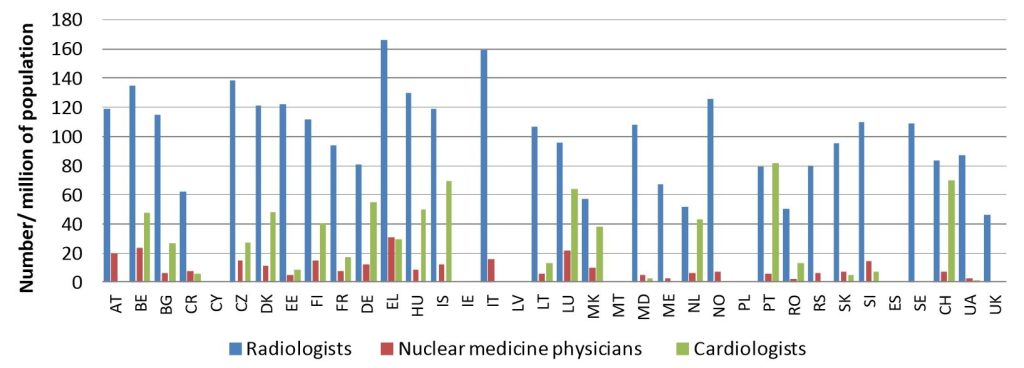
The results of the Dose Datamed 2 Project have been published as a draft report with a supplement of European DRLs. The report will be finalised after evaluation by the EC during spring 2013. Since the report is still the draft report of the DDM2 the results are for internal use of the project only and should not yet be used or referred to for any other purpose.
Number of radiologists and number of physicians in OECD countries, 2007
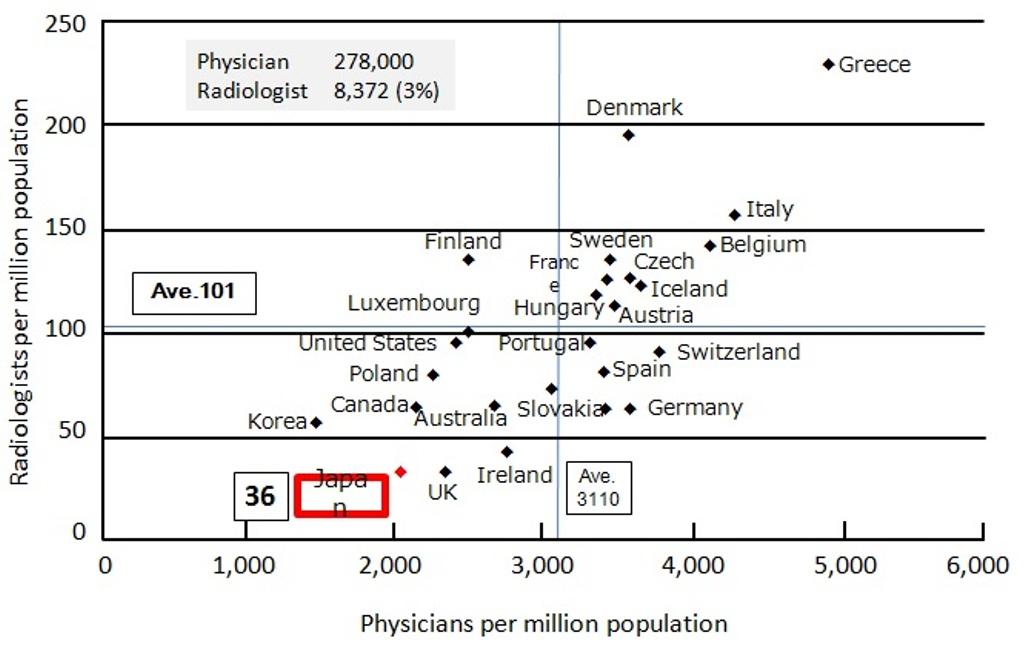
Number and Percentage of Physicians by Specialty in the United States
(Data kindly provided by the American College of Radiology)
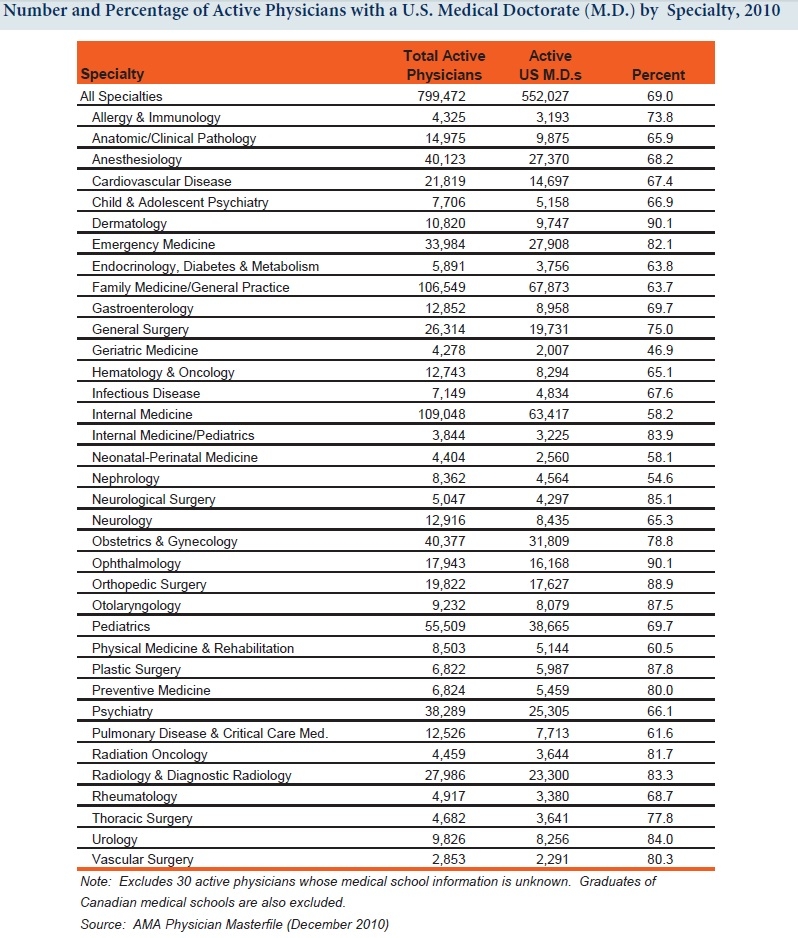
Number of inhabitants per radiologist, 2011 (including residents in training)
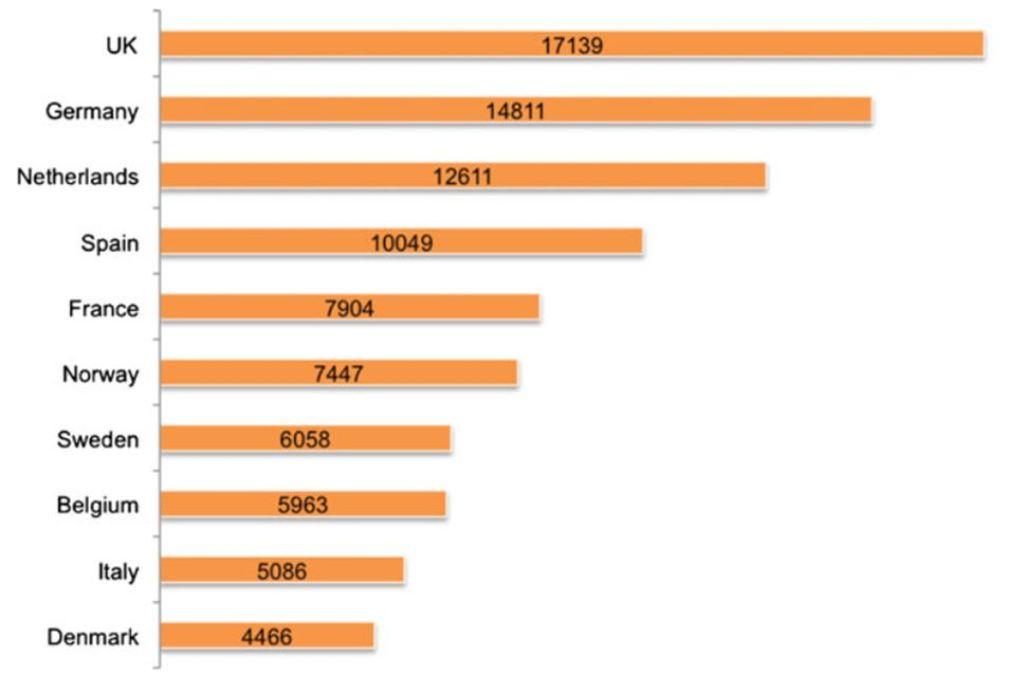
Number of MRI and CT exams per 1000 population in Europe, 2014
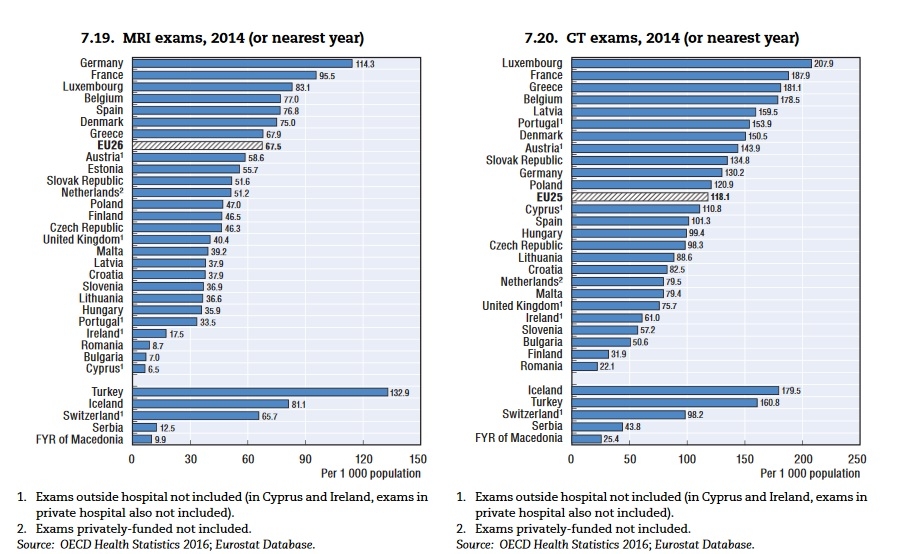
Number of MRI and CT exams per 1000 population in OECD countries, 2013
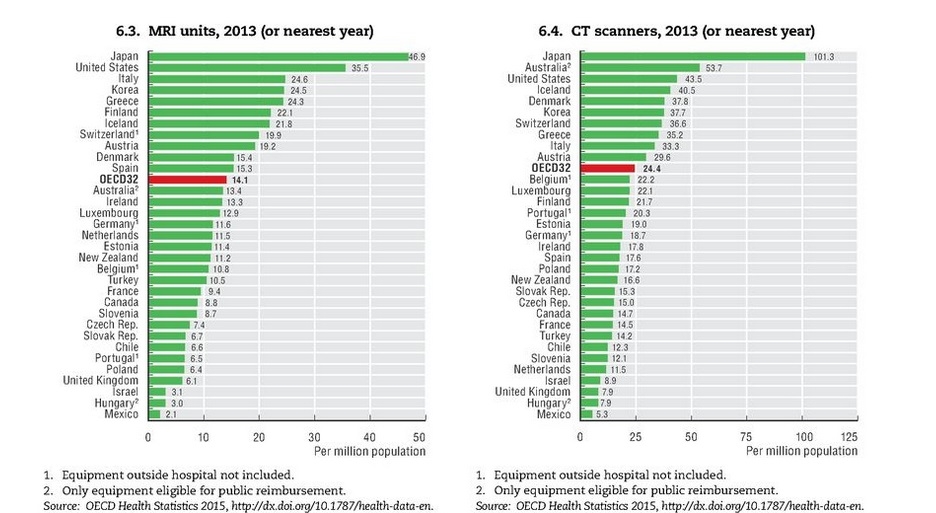
Number of CT/MR examinations per radiologist in OECD countries, 2007
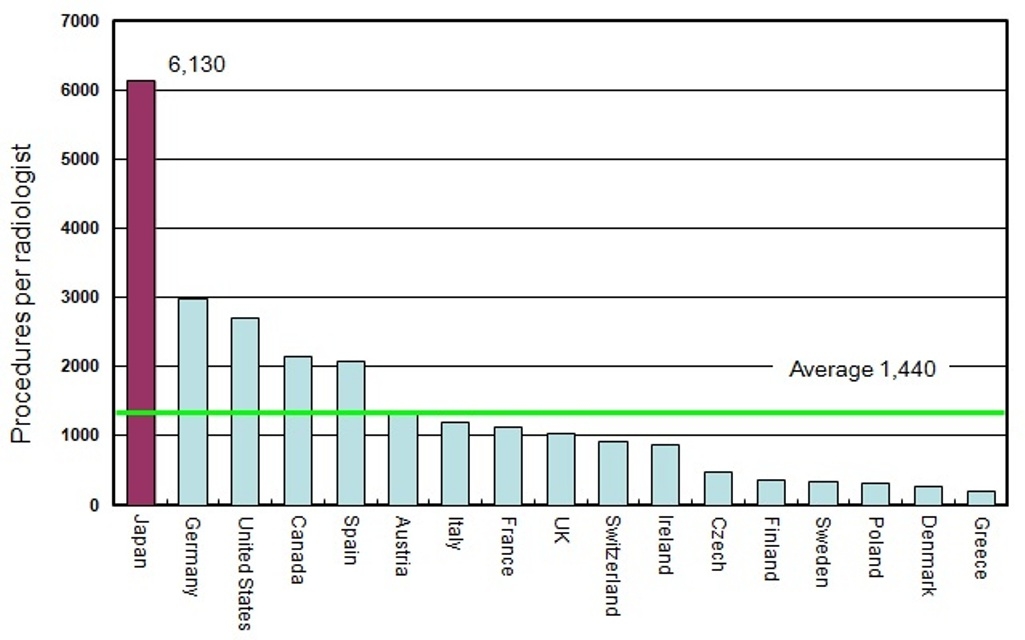
Ultrasound Survey – organisation and practice of radiological ultrasound in Europe
Source: European Society of Radiology (2013). Organisation and practice of radiological ultrasound in Europe: a survey by the ESR Working Group on Ultrasound. In Insights into Imaging, August 2013, Volume 4, Issue 4, pp. 401-407. Available here.
Survey Methodology: A survey containing 38 questions and divided into four groups was developed and made available online. The questionnaire was sent to over 1,000 heads of radiology departments in Europe. Of the 1,038 radiologists asked to participate in this survey, 123 responded. Excluding the 125 invitations to the survey that could not be delivered, the response rate was 13 %.
A list of the nationalities of respondents is available here.
European Federation of Radiographers Member Survey Results
Source: European Federation of Radiographer Societies (2013). EFRS Survey 2 – 2012: Radiographer Societies in Europe. Published June 2013, results correct as of February 2013. Available here.
Survey Methodology: the second EFRS member survey (first survey: 2010) was carried out by the EFRS among national radiographer societies in 29 European countries using both closed and open questions. Out of the EFRS’s 35 member societies, 32 completed the questionnaire. Please note that not every question was completed by all of the 32 respondents.
A list of participating countries and national societies is available here. More information on the EFRS can be found here.
Mean effective doses for x-ray procedures
Source: Dose Datamed 2. Medical Radiation Exposure of the European Population, part 1/2.
Available here.
Collective effective dose in mSv from radiodiagnostic procedures per 1000 of population
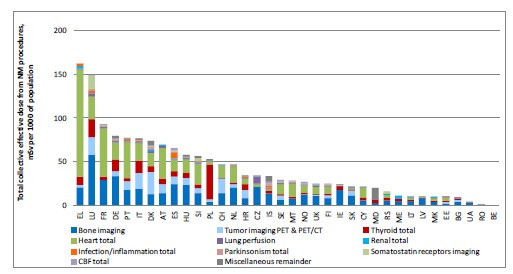
Estimation of effective dosage and cancer risk
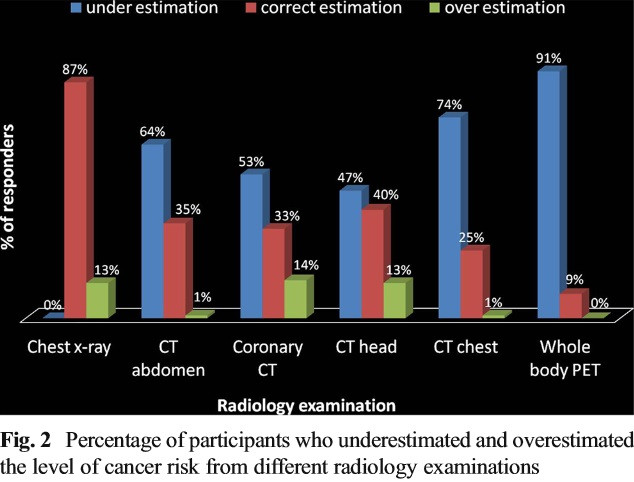
Number of radiological examinations per age group in Japan, 2010 and 2030
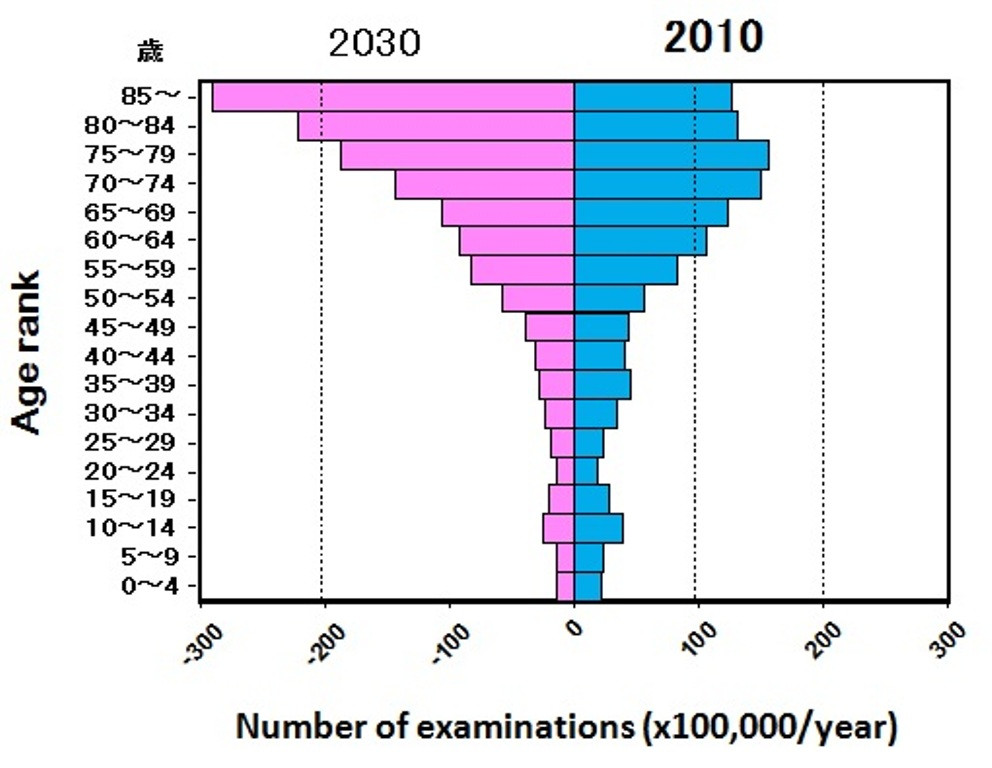
Referral Guidelines for Imaging
The Referral Guidelines project is aimed at assessing the current status of the availability of imaging referral guidelines in European Union member states and those countries enacting European legislation.
A web survey aimed at the heads of national radiological and nuclear medicine societies as well as other competent authorities dealing with radiation safety was conducted in 30 countries (EU-27, Croatia, Norway, Switzerland). Responses were received from all countries and plotted and analysed to identify major issues, important differences between Member States and good practices in regard to referral guidelines for radiological and nuclear medicine imaging.
More details about the project are available here.
Radiographer societies’ involvement in the development of professional standards, 2012
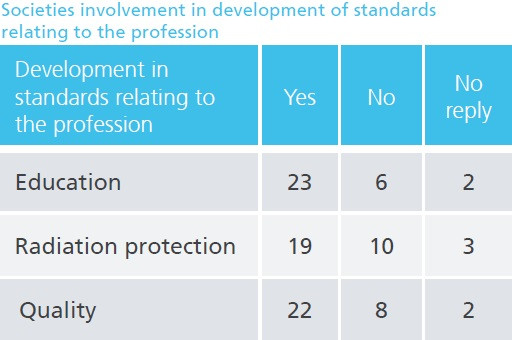
Survey Methodology: the second EFRS member survey (first survey: 2010) was carried out by the EFRS among national radiographer societies in 29 European countries using both closed and open questions. Out of the EFRS’s 35 member societies, 32 completed the questionnaire. Please note that not every question was completed by all of the 32 respondents.
A list of participating countries and national societies is available here. More information on the EFRS can be found here.
WHO Report – eHealth in the WHO European Region 2016
Source: From Innovation to Implementation: eHealth in the WHO European Region. World Health Organization 2016. Available here.
Hospitals’ eHealth Deployment Composite Index and number of CT scanners per 100,000 population
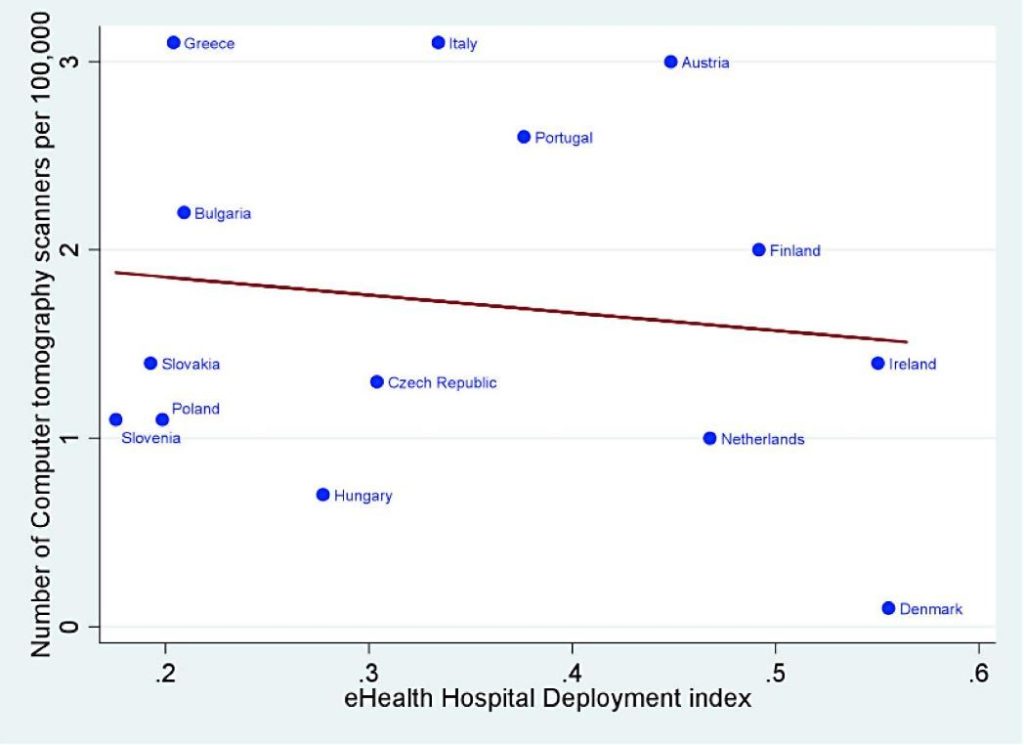
Departmental Electronic Patient Record Systems’ interoperability problems at 688 European hospitals, 2011
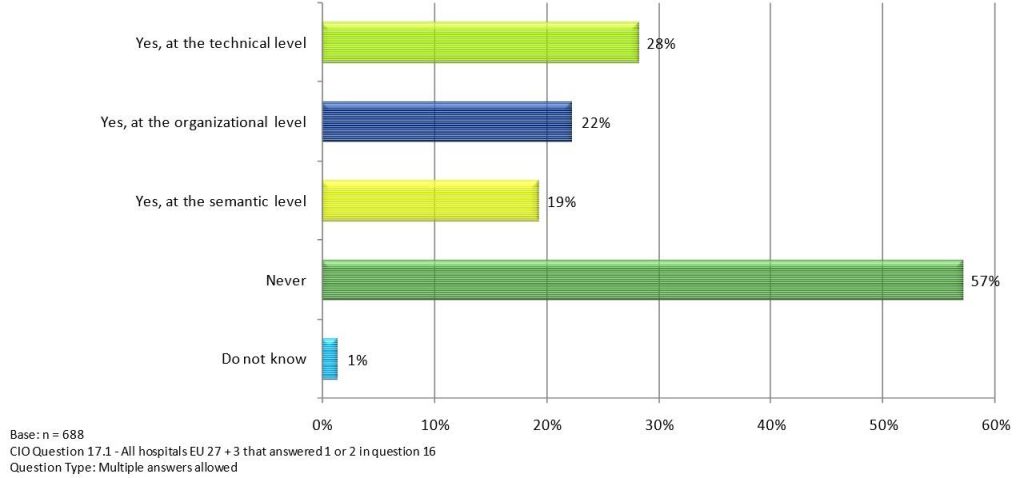
Use of different technologies by hospital size
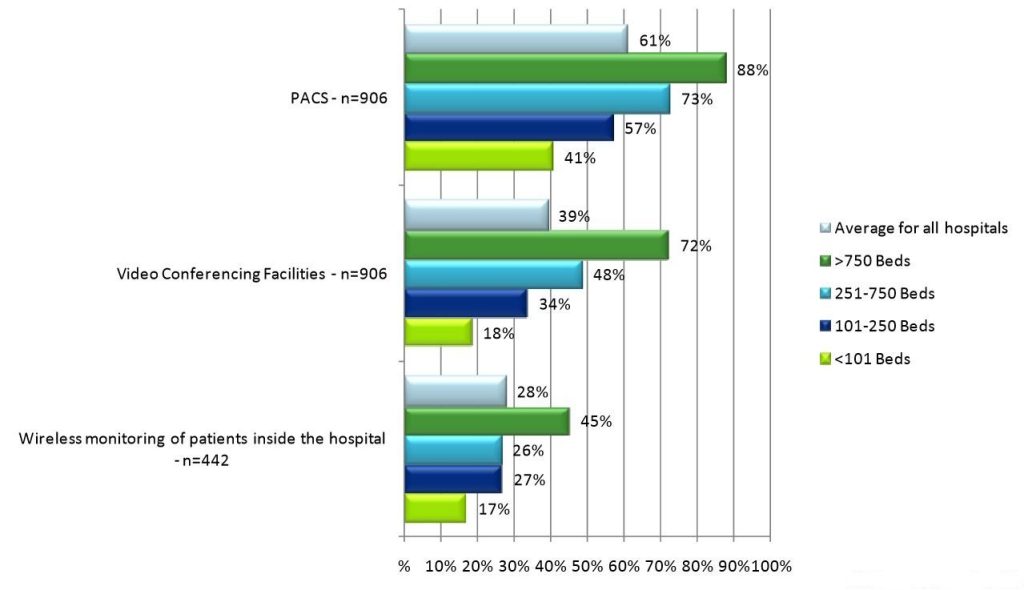
Availability of PACS by country
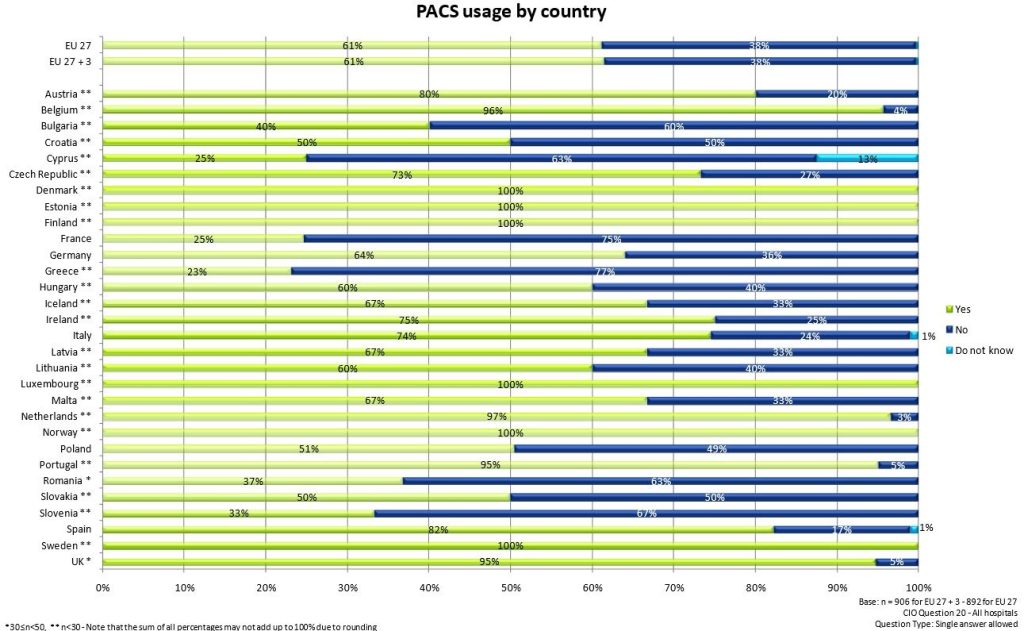
PACS accessibility
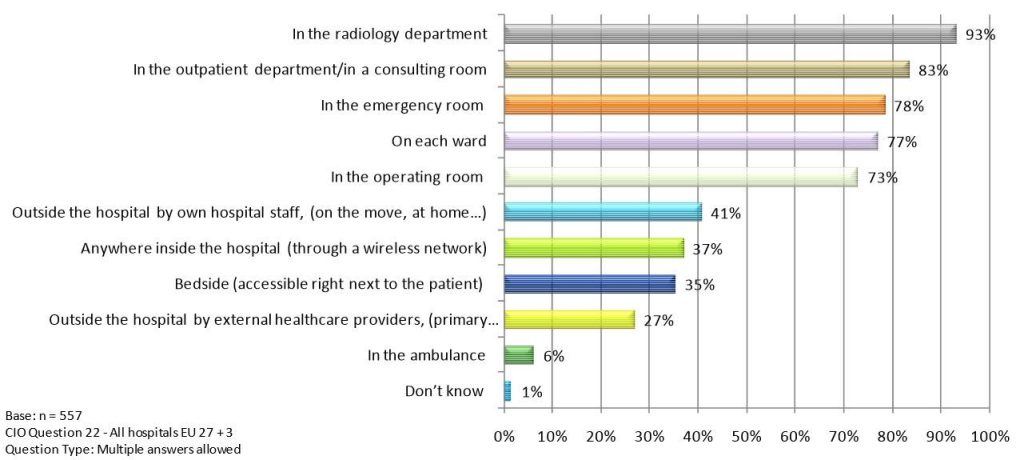
Ultrasound Survey – organisation and practice of radiological ultrasound in Europe
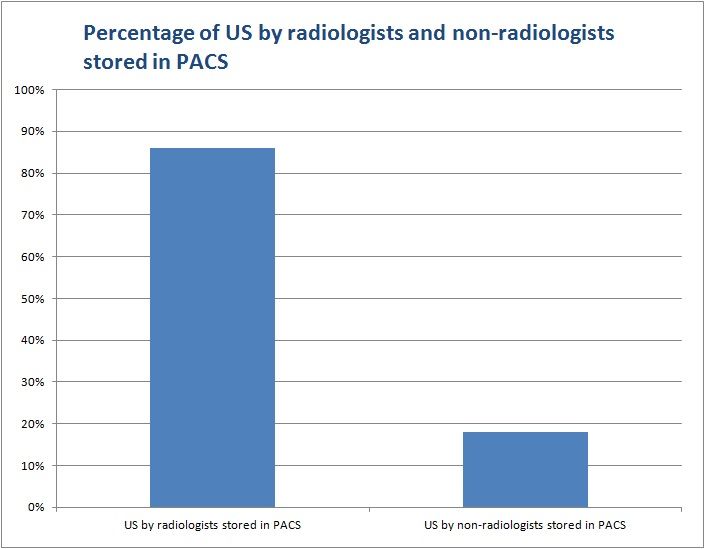
Survey Methodology: A survey containing 38 questions and divided into four groups was developed and made available online. The questionnaire was sent to over 1,000 heads of radiology departments in Europe. Of the 1,038 radiologists asked to participate in this survey, 123 responded. Excluding the 125 invitations to the survey that could not be delivered, the response rate was 13 %.
A list of the nationalities of respondents is available here.
European Teleradiology now and in the future: results of an online survey
Source: E.R. Ranschaert and F.H. Barneveld Binkhuysen, European Teleradiology now and in the future: results of an online survey. In Insights into Imaging (2013) 4:93-102, published 18 December 2012. Available here.
European Commission study on national laws on electronic health records, 2014
Source: Overview of the national laws on electronic health records in the EU Member States and their interaction with the provision of cross-border eHealth services – Final report and recommendations (Contract 2013 63 02). Available here.
Results of the Euro Health Consumer Index 2016 – Accessibility

Results of the Euro Health Consumer Index 2016 – Accessibility

Results of the Euro Health Consumer Index 2016 – CT waiting times
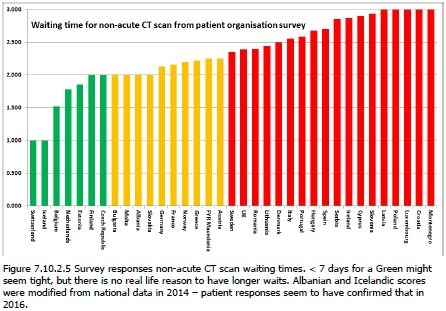
WHO Report – eHealth in the WHO European Region 2016
Source: From Innovation to Implementation: eHealth in the WHO European Region. World Health Organization 2016. Available here.
ESR Survey on Patient Communication, Confidentiality and Consent (2013)
Source: Patient communication, confidentiality and consent: radiology policy and practice in Europe. A survey by the European Society of Radiology. Insights into Imaging (2013) 4: 153-156. Available here.
Mammography screening in women in Europe, 2004-2014
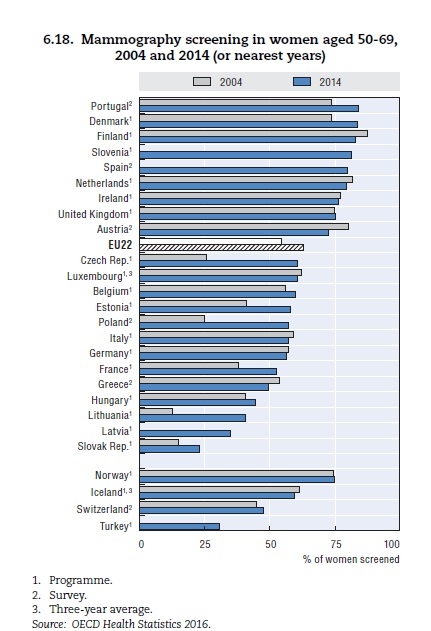
Radiology training in 38 European countries
Source: ESR survey 2012.
A web-based survey was used to identify PhD training programmes for MDs of relevance to imaging in Europe and to assess their accessibility. In the long-term, the objective of the survey is to develop an online database comprising all these PhD programmes, allowing easy access to this information.
The questionnaire, devised by ESR and EIBIR, was specifically distributed to reach experts and heads of designated imaging departments of research organisations, universities and hospitals including EIBIR Network Members and ESR Heads of Radiology. In total, 1334 experts in 52 countries were contacted including 27 European Union member states, 18 countries geographically-considered as European countries and two countries using European legislation (Norway and Switzerland).
Trends of use in eLearning
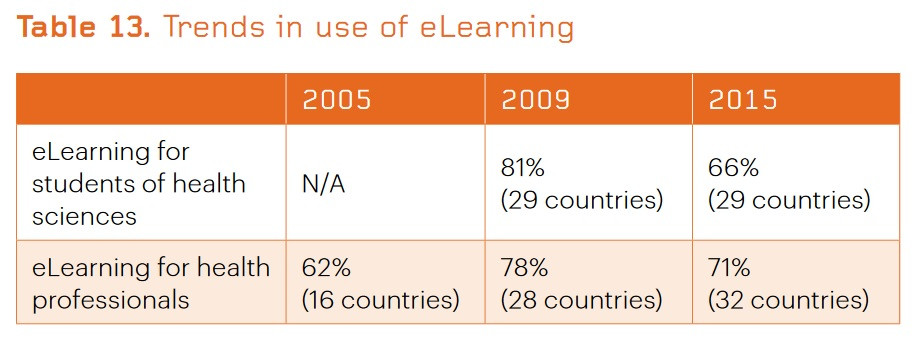
Reasons for using eLearning for students and professionals
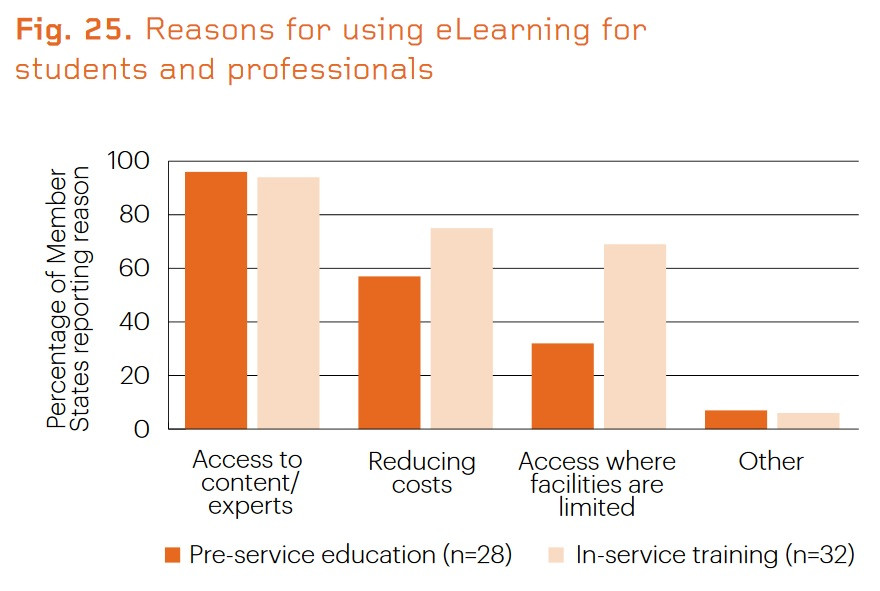
The structure of the initial radiographer education curriculum in Europe
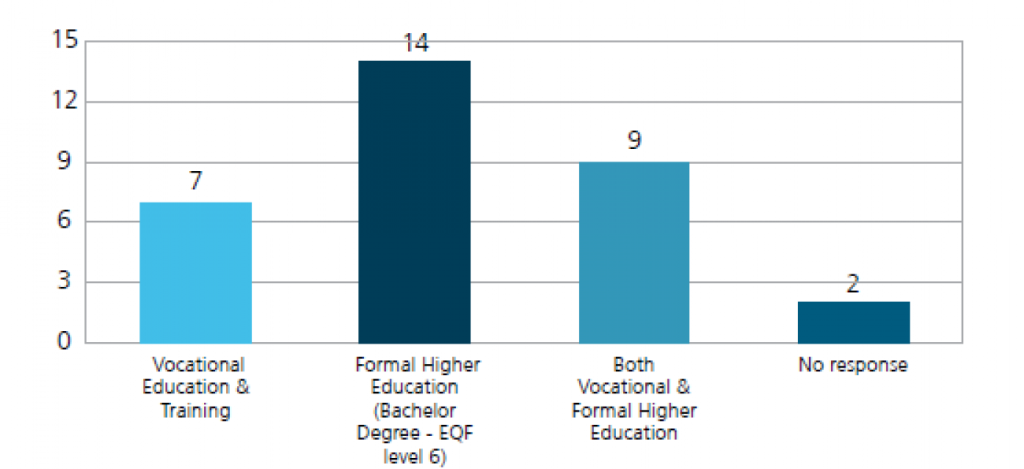
Responses from Educational Institutions to web-based MEDRAPET survey
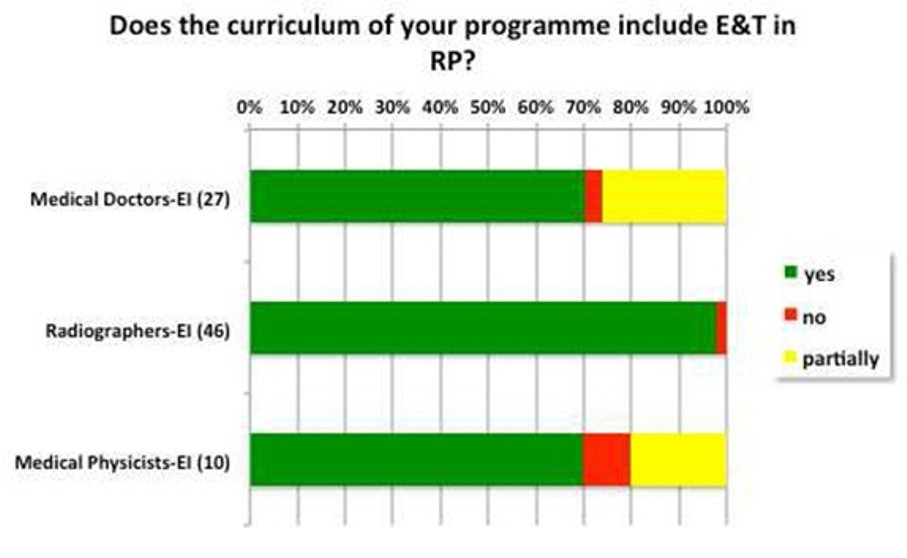
The MEDical RAdiation Protection Education and Training project was aimed at assessing the implementation of the training requirements laid down in Council Directive 97/43/EURATOM (Medical Exposure Directive-MED).
A questionnaire with specific sections for regulators, national professional societies and educational institutions was developed. The survey ran from September 13 to October 31, 2011. The response rate was 24 percent among organisations and 29 percent from countries. Different organisations from 34 European countries were targeted (EU-27, Norway, Switzerland, Croatia, the Former Yugoslav Republic of Macedonia, Turkey).
More details about the project are available here.
Medical imaging training activities
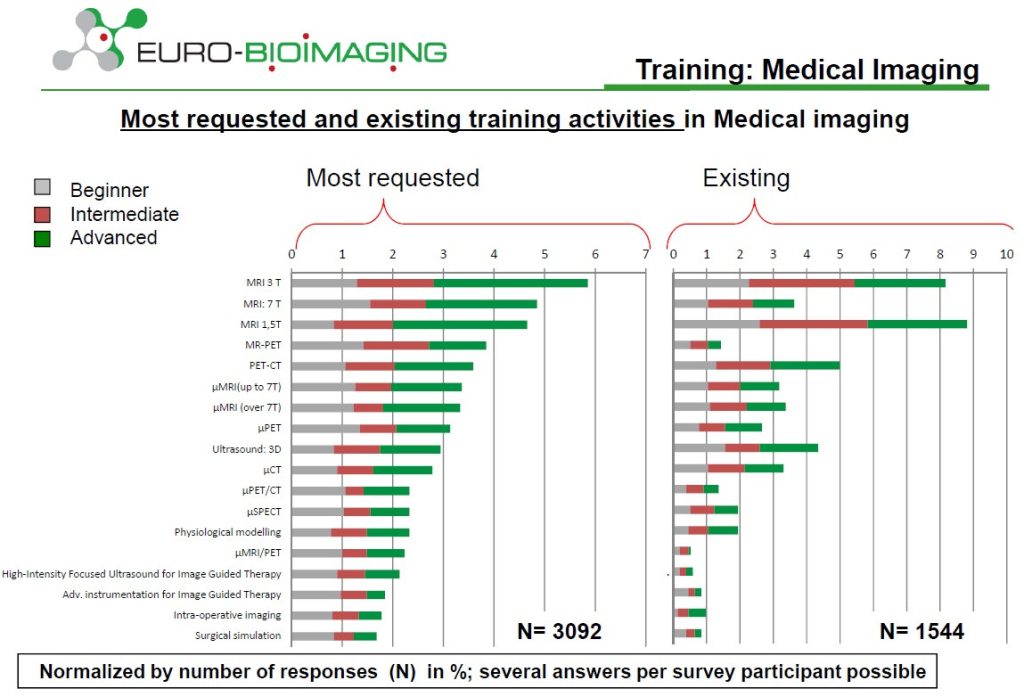
Survey Methodology: Euro-BioImaging conducted a Europe-wide survey on imaging research infrastructure that ran from June 1 to July 15 2011 with the aim of establishing an inventory of existing imaging infrastructure and assessing the needs of users, providers, industry and funders. Responses were received from 660 participants. However, results are not representative or comprehensive for each technology or country and therefore need to be interpreted with caution.
Ultrasound Survey – organisation and practice of radiological ultrasound in Europe
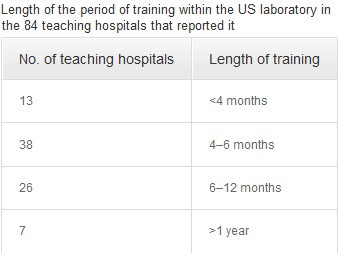
Ultrasound Survey – organisation and practice of radiological ultrasound in Europe
Survey Methodology: A survey containing 38 questions and divided into four groups was developed and made available online. The questionnaire was sent to over 1,000 heads of radiology departments in Europe. Of the 1,038 radiologists asked to participate in this survey, 123 responded. Excluding the 125 invitations to the survey that could not be delivered, the response rate was 13 %.
A list of the nationalities of respondents is available here.
Duration of Radiology Training in Japan
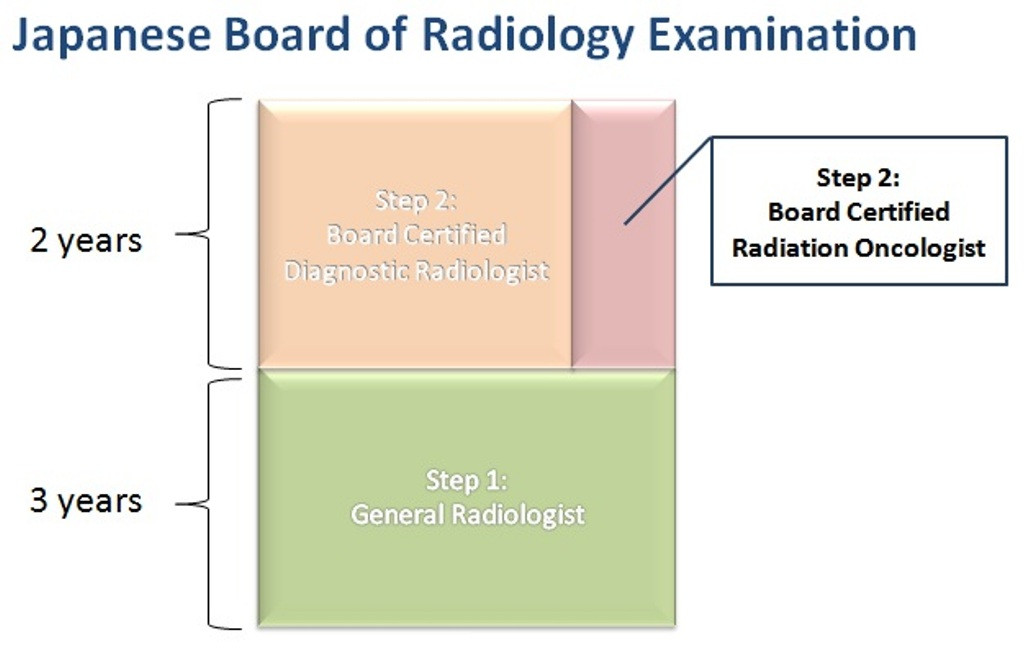
Responsibility for radiographer education in European countries, 2012
Survey Methodology: the second EFRS member survey (first survey: 2010) was carried out by the EFRS among national radiographer societies in 29 European countries using both closed and open questions. Out of the EFRS’s 35 member societies, 32 completed the questionnaire. Please note that not every question was completed by all of the 32 respondents.
A list of participating countries and national societies is available here. More information on the EFRS can be found here.
MD PhD programmes with relevance to imaging
– Results from a European survey
Source: MD PhD programmes with relevance to imaging. Results from a European survey, in: Insights into Imaging Volume 4 (2013), published online May 31, DOI: 10.1007/s13244-013-0249-5. Available here.
FP7 success rates by specific programme 2007-2012
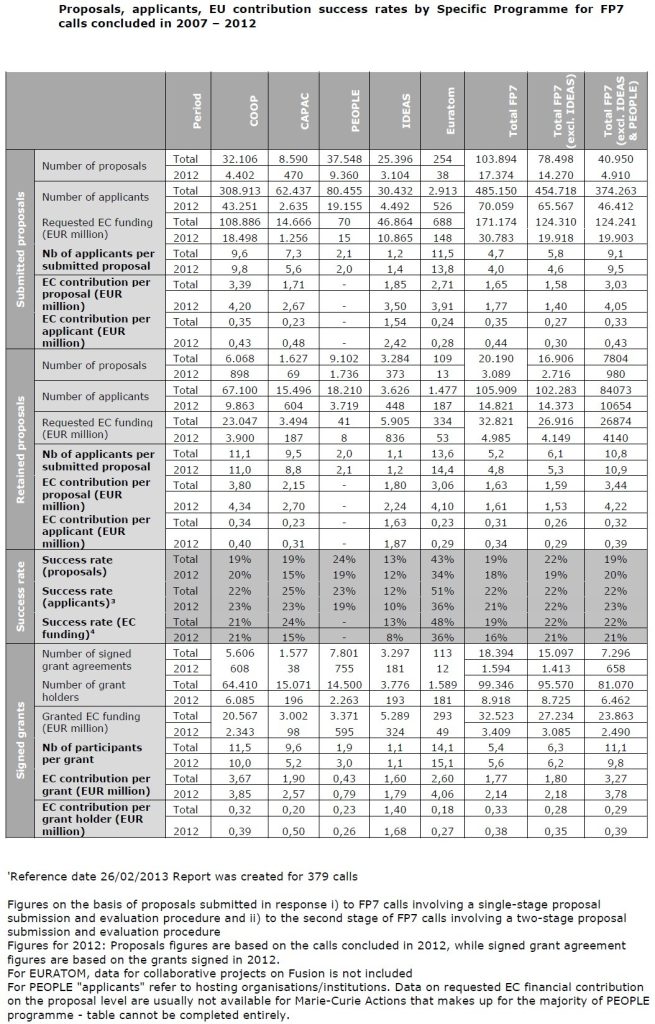
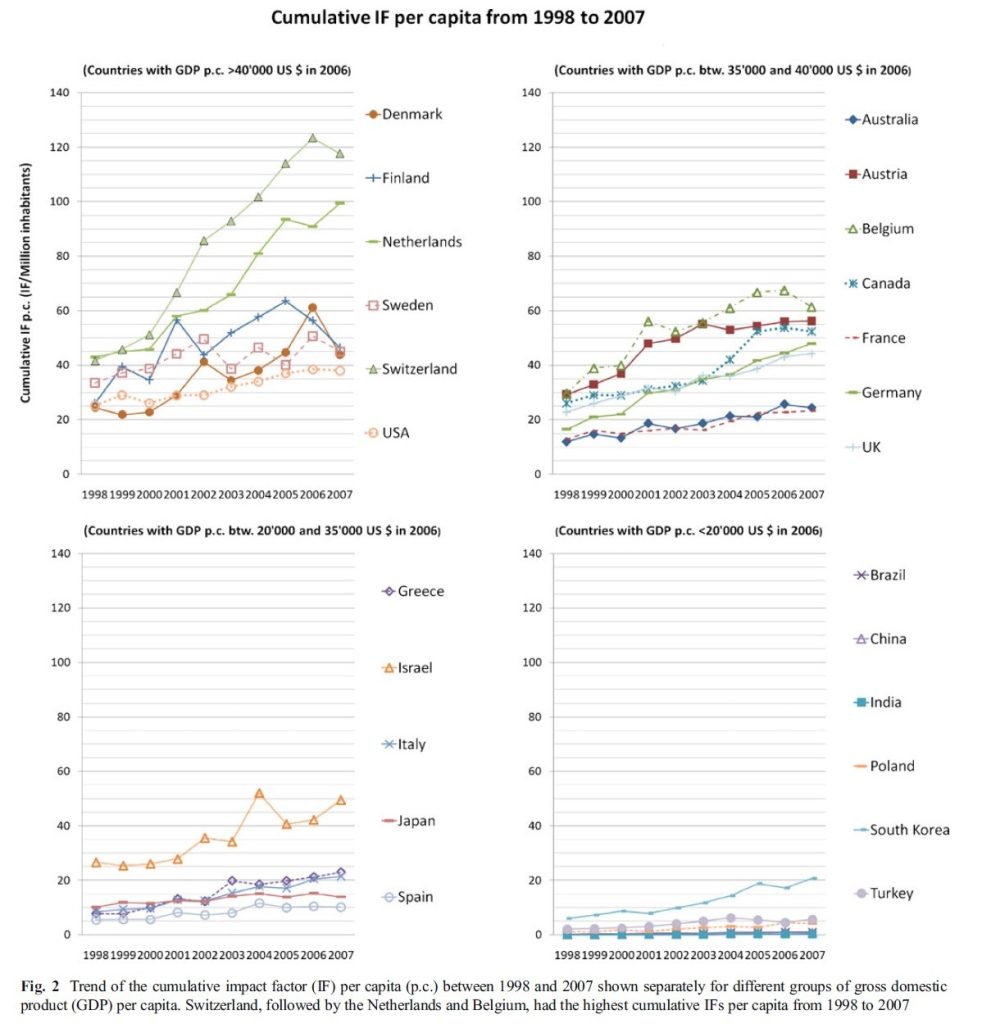
Barriers to implementing big data for health
